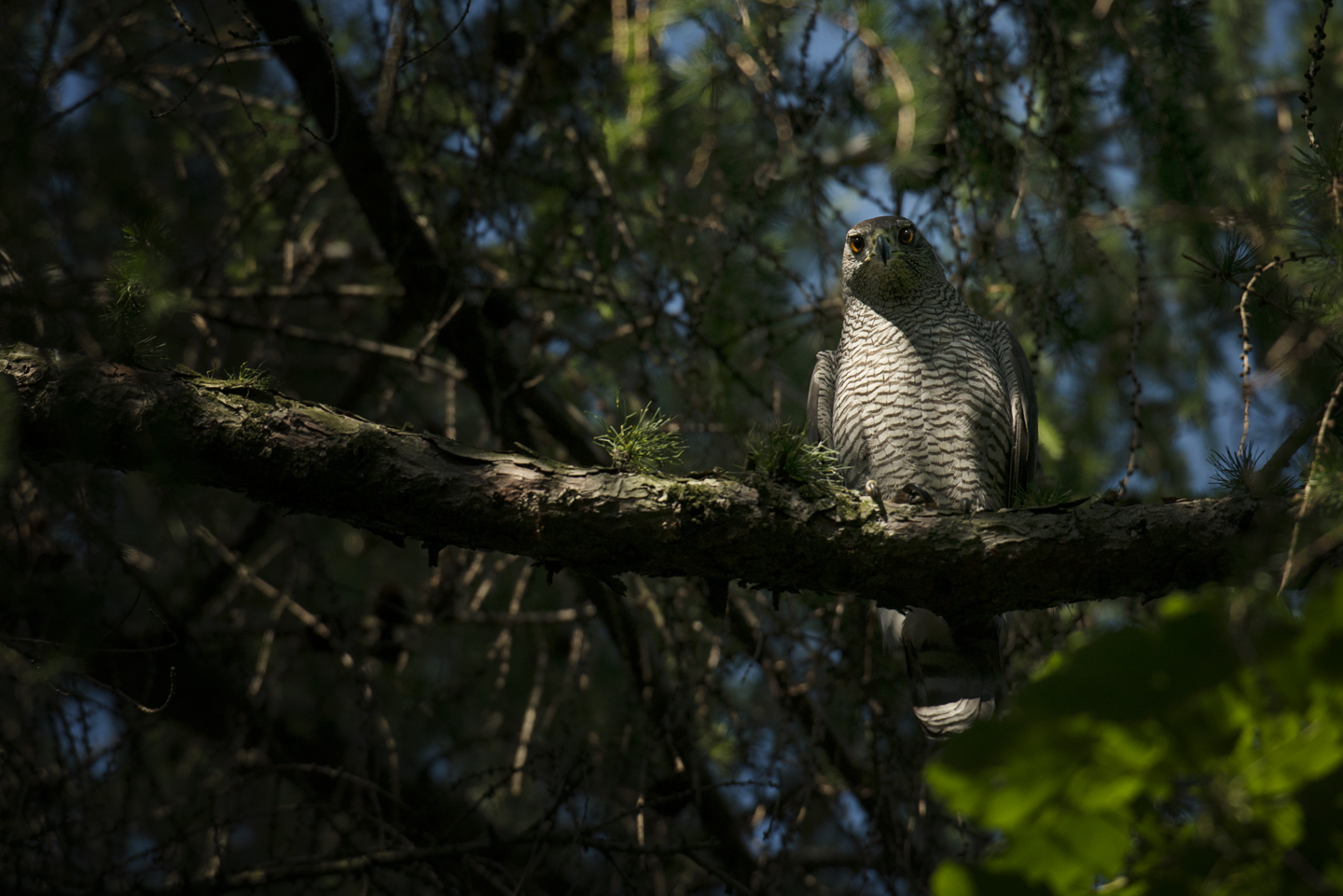
If you take a walk through Berlin's parks and cemeteries, you might be watched by a silent killer
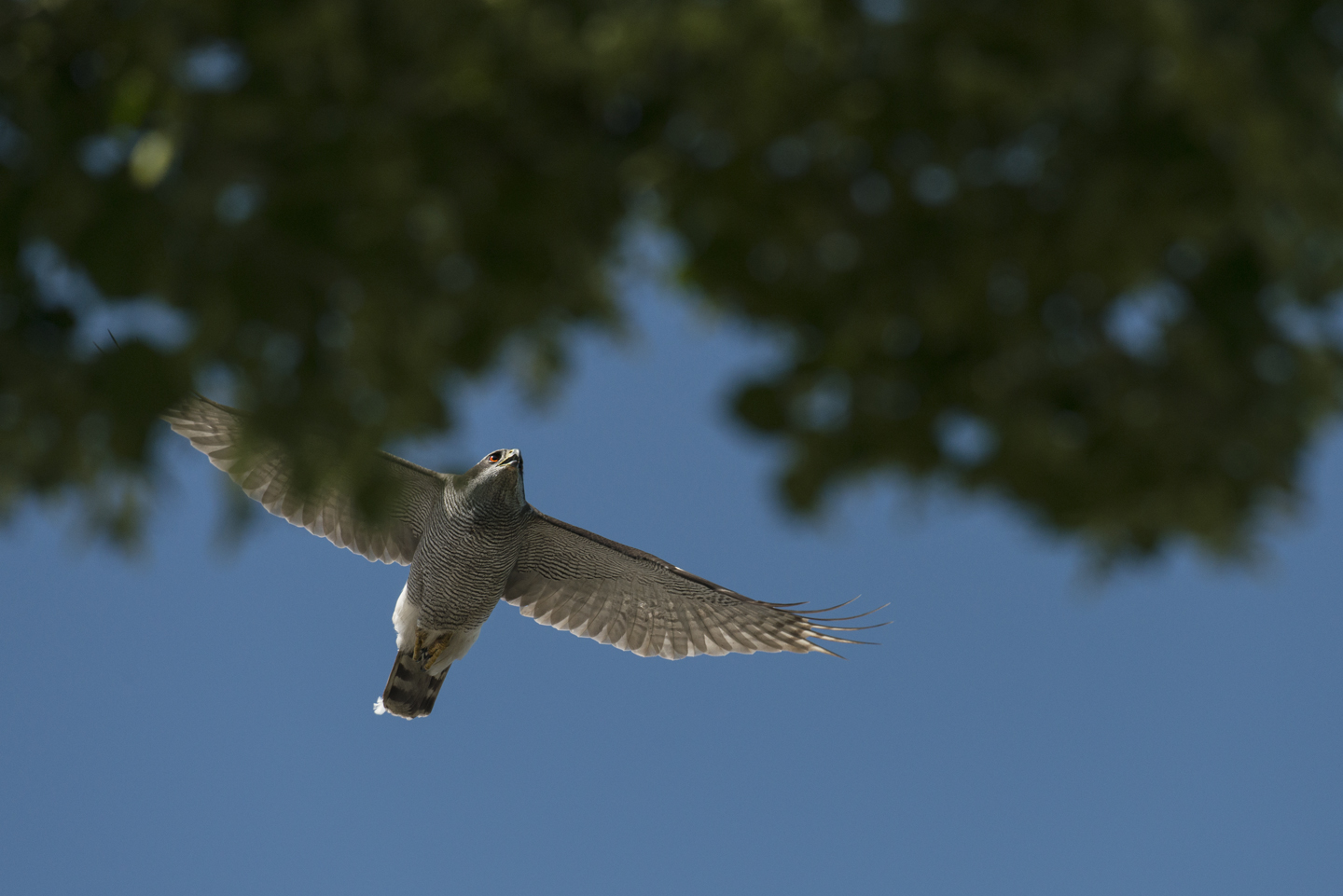
Fabled in folklore and notoriously elusive, the northern goshawk has found a home in the city's tree-tops
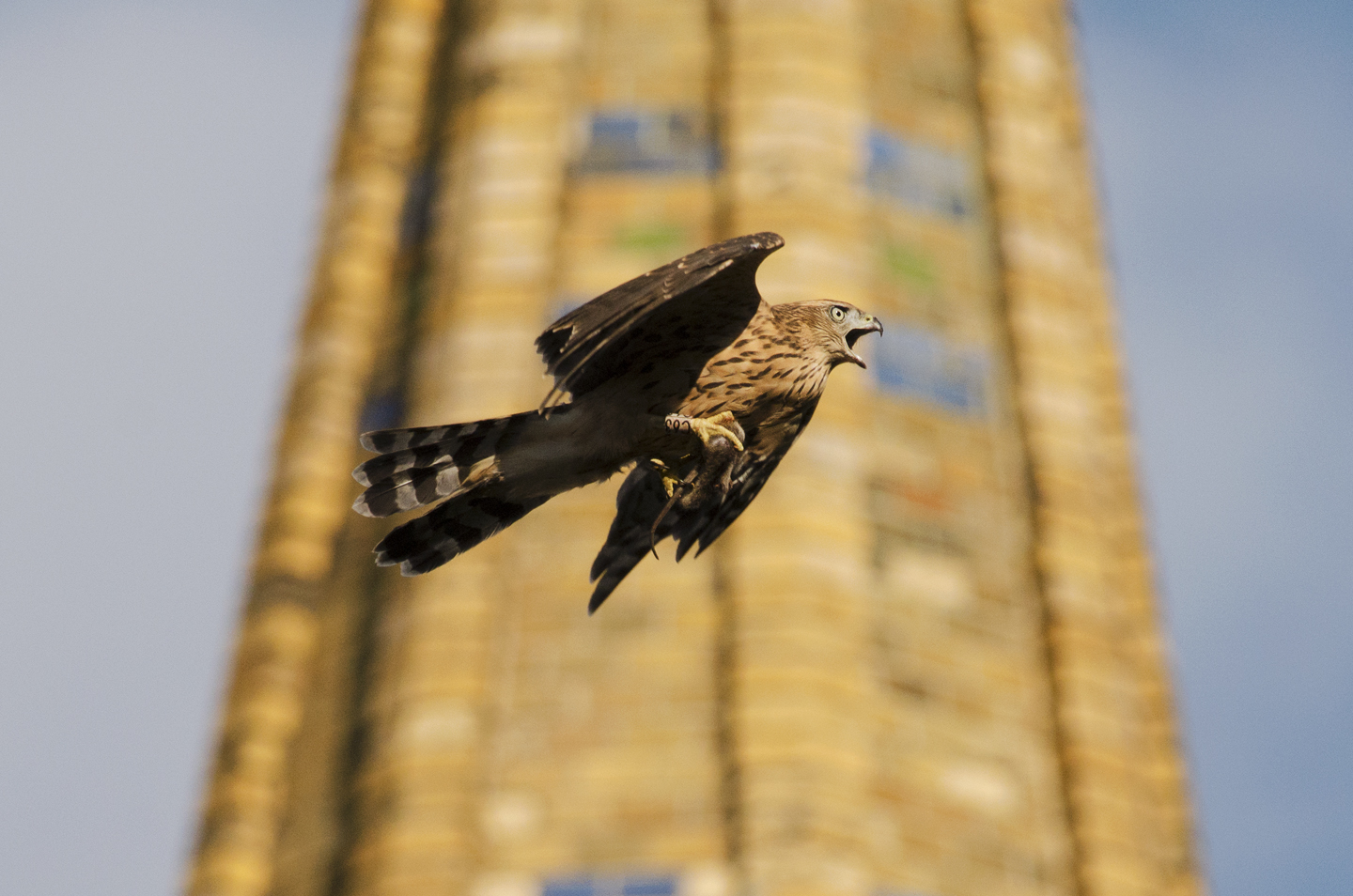
From a few pioneering pairs in the early 80s, the goshawk is now a well established urban invader
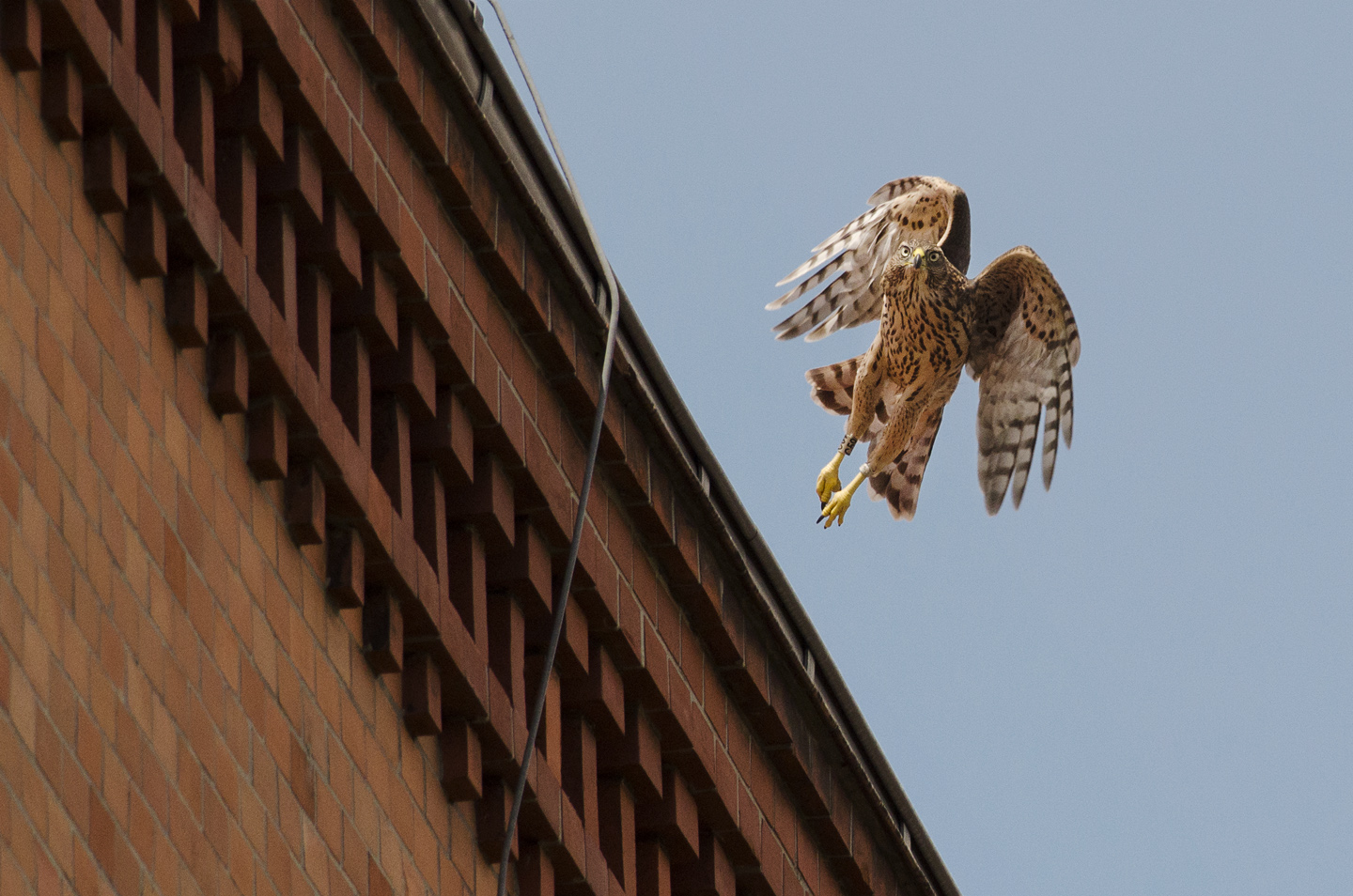
There are over 100 breeding pairs in Berlin, with many more juveniles and unpaired birds making their homes in the city
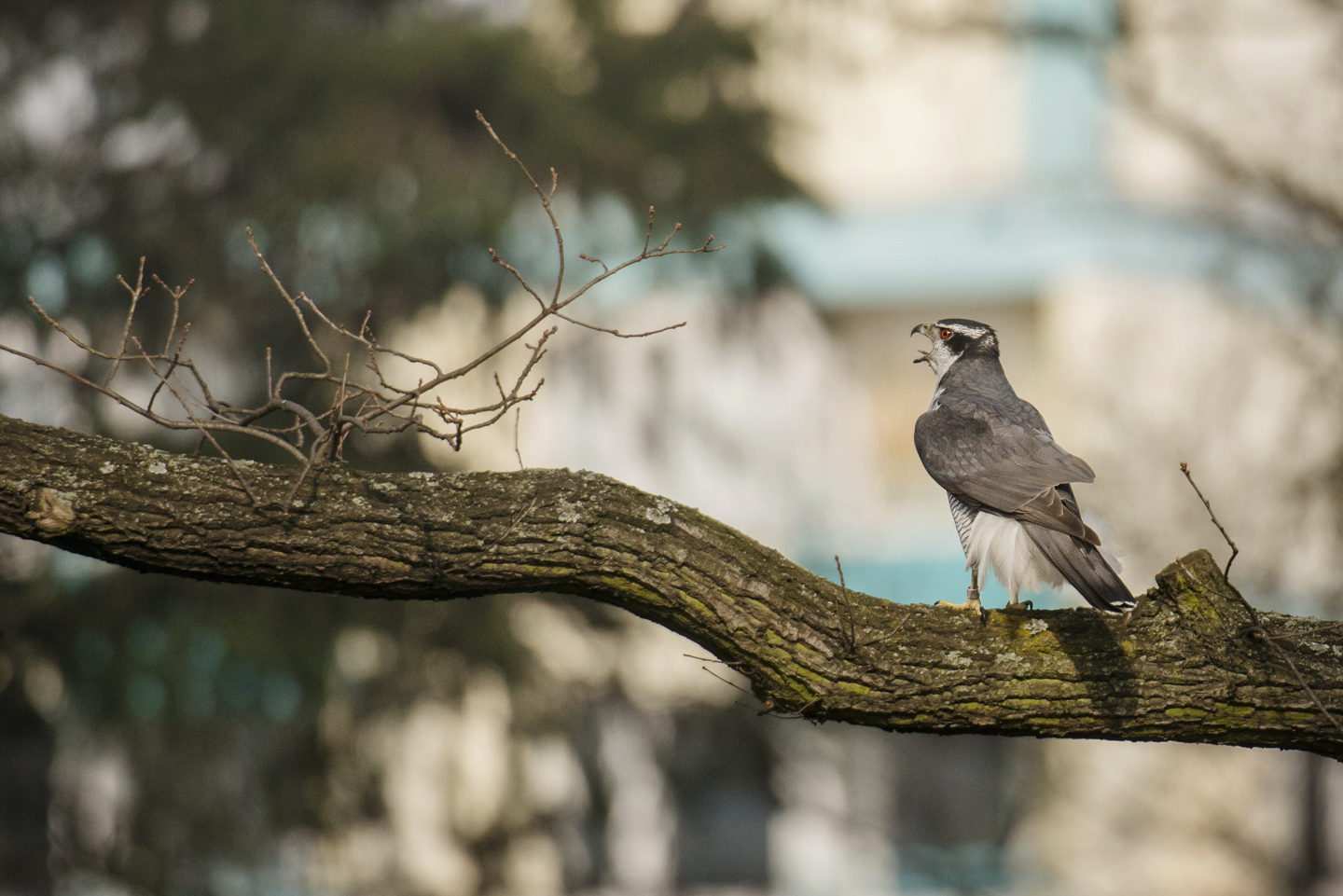
Many goshawks nest in Berlin's suburban forests, but cemeteries, city parks and urban courtyards are increasingly common breeding territories
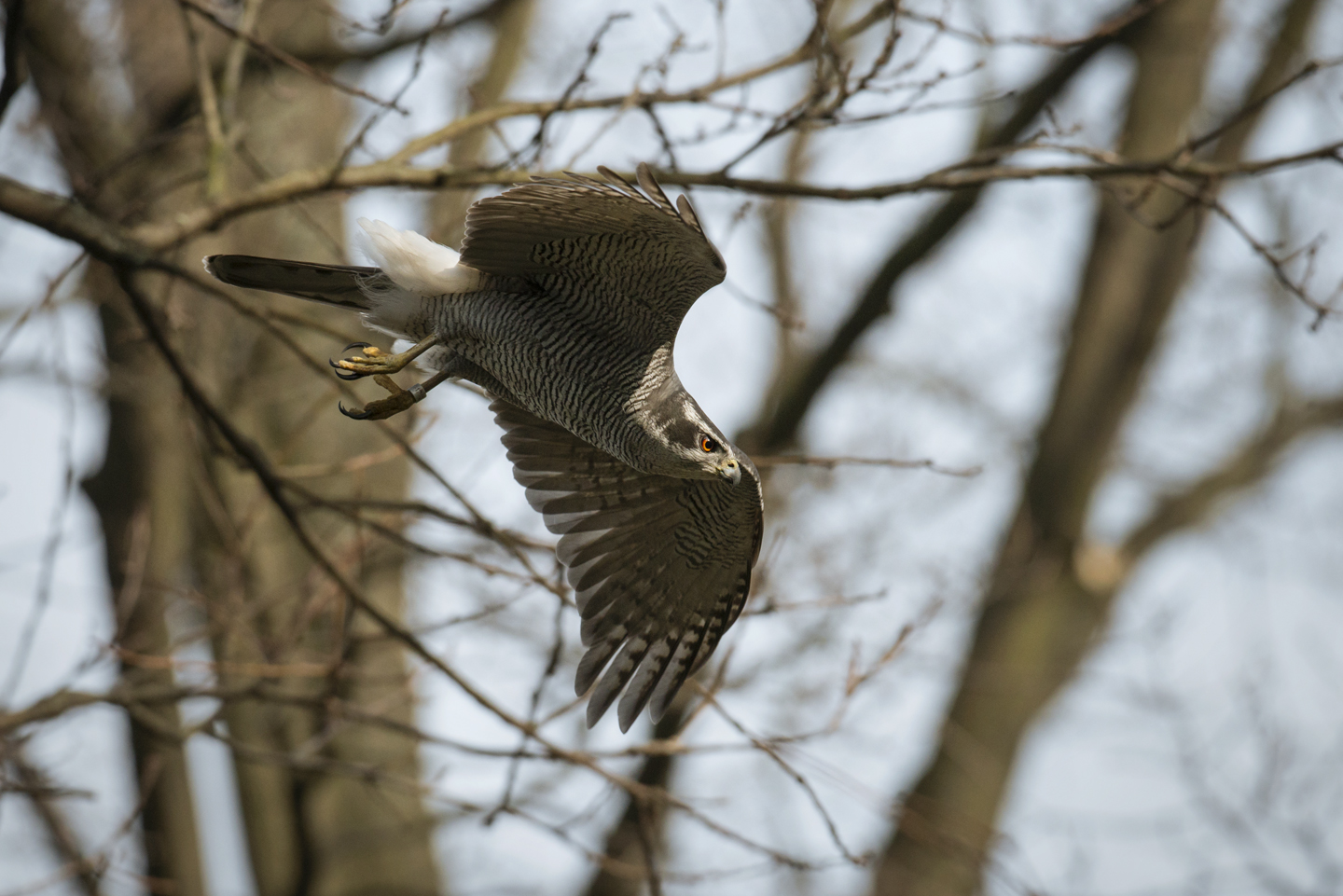
Feral pigeons and city rats are common prey, but kestrels, pet budgies and even long-eared owls are on the menu for this apex aerial predator

The goshawk has long powerful legs for chasing prey at ground level and for keeping seized prey at a distance - a peck from a crow could be blinding
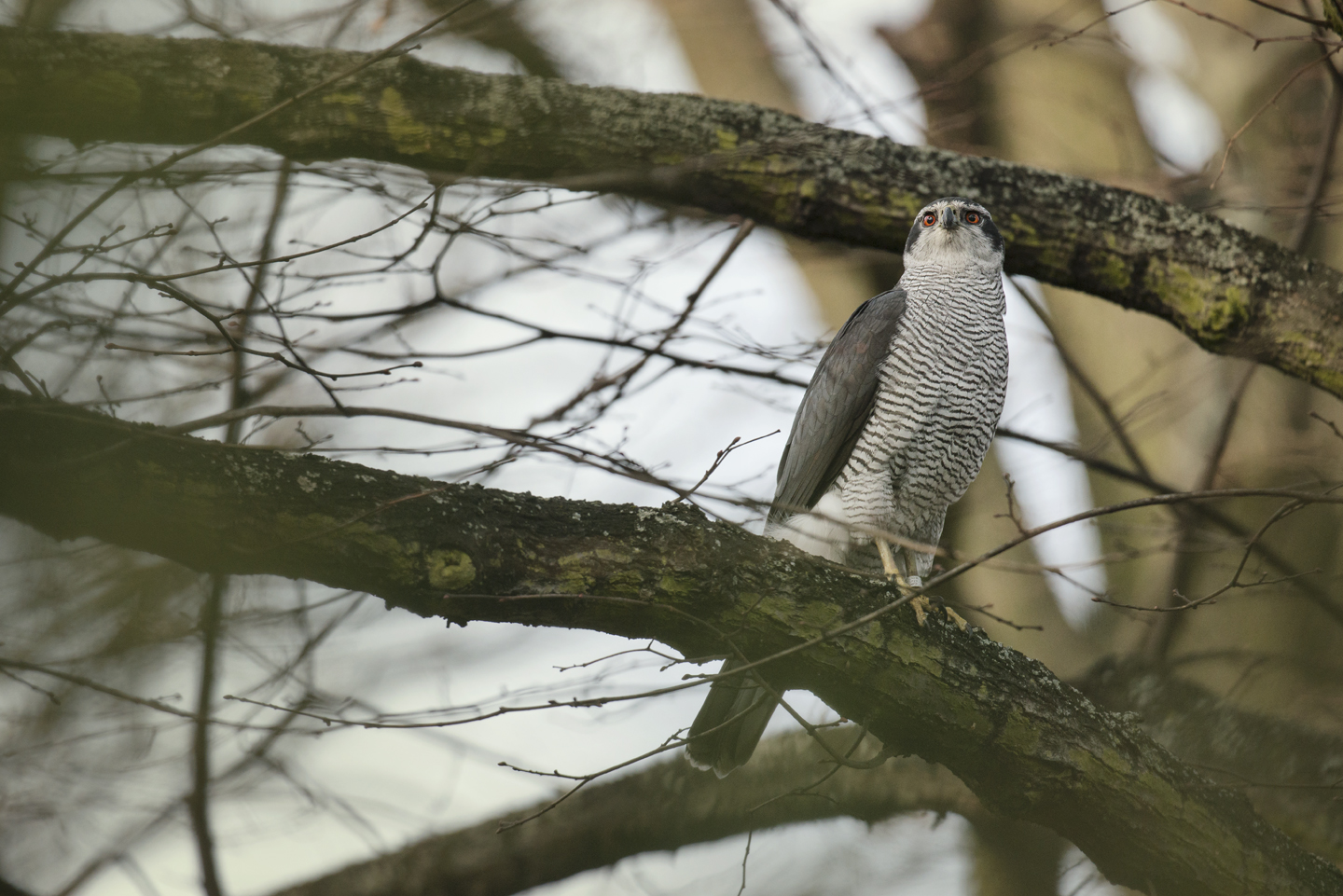
These urban raptors may hunt in the city, but remain mostly arboreal - always nesting amongst the trees
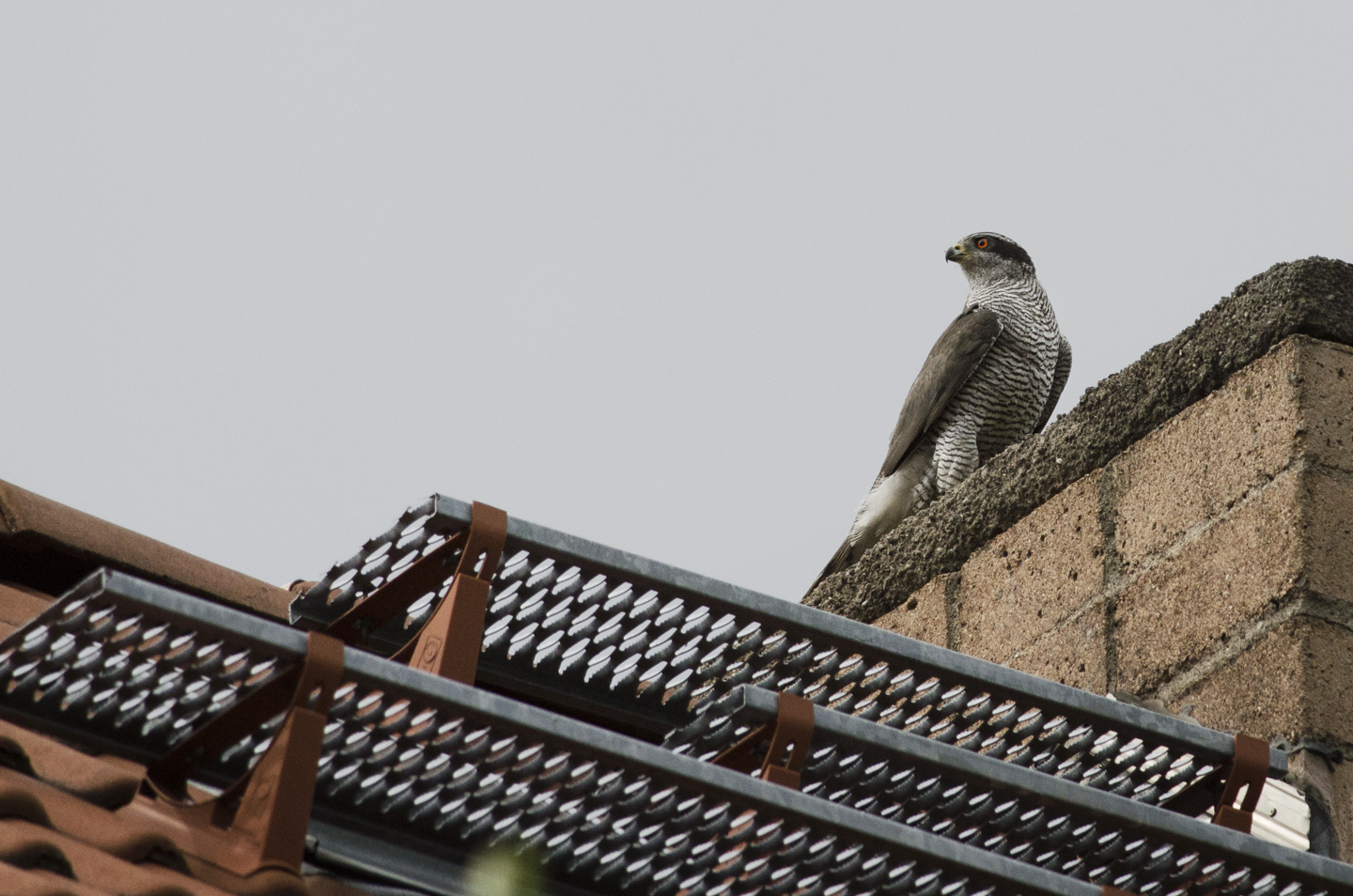
Buildings do however provide perfect hunting perches, with unimpeded 360º views
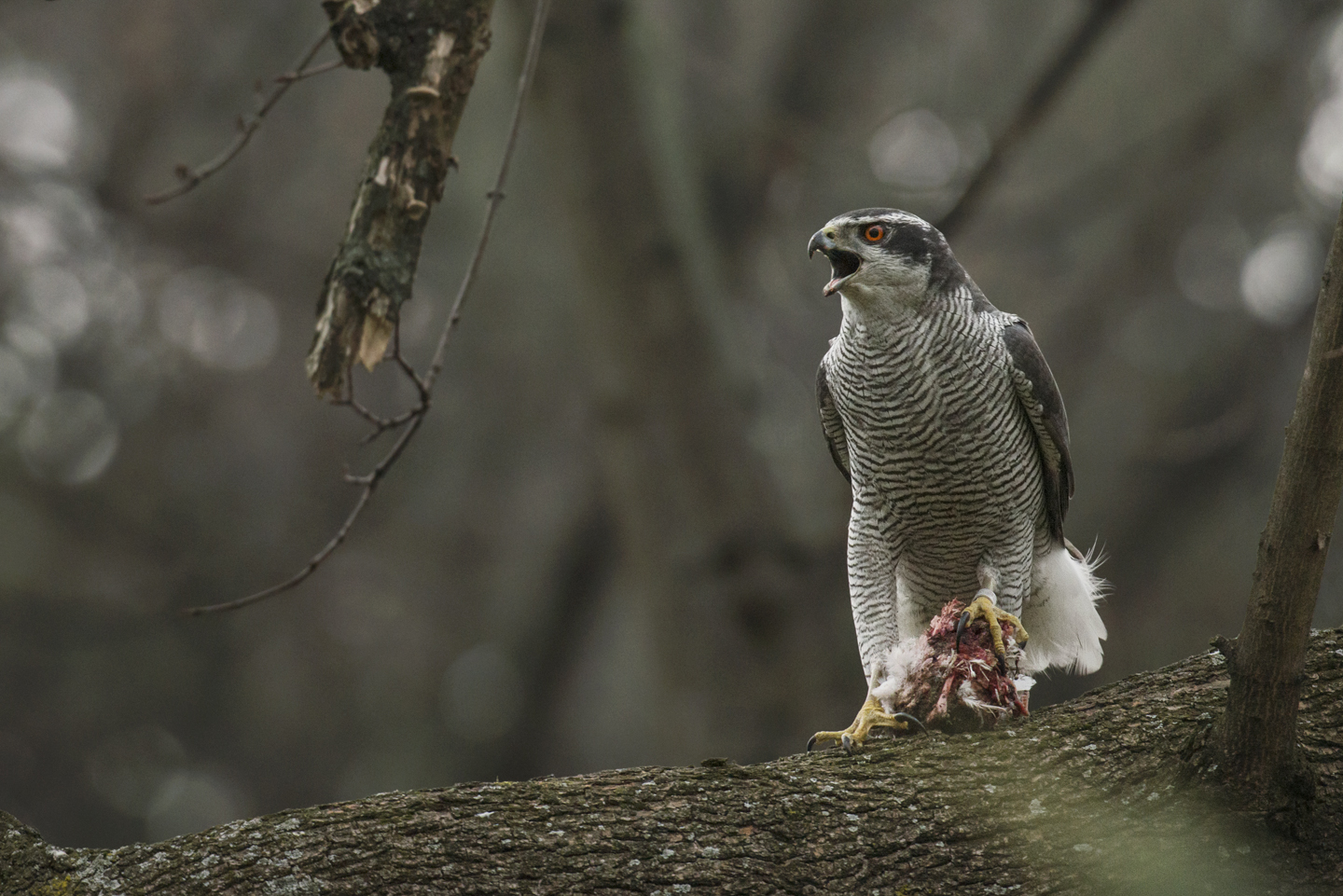
During Spring courtship, the males call loudly, whilst "flagging" their under-tail coverts, and hope to impress the females with gifts of food
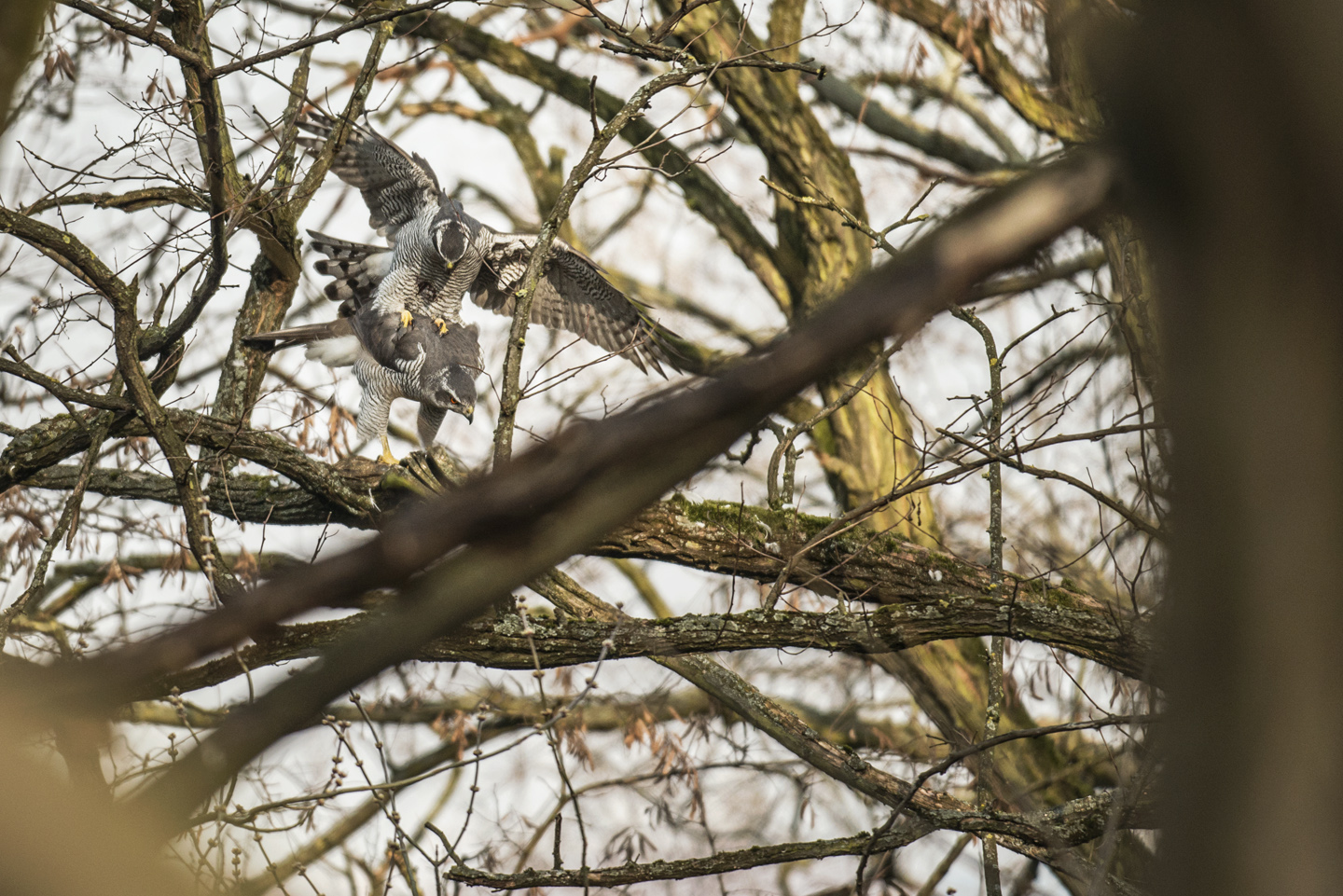
After mating, laying, incubation and hatching, the nestlings are monitored and ringed when old enough
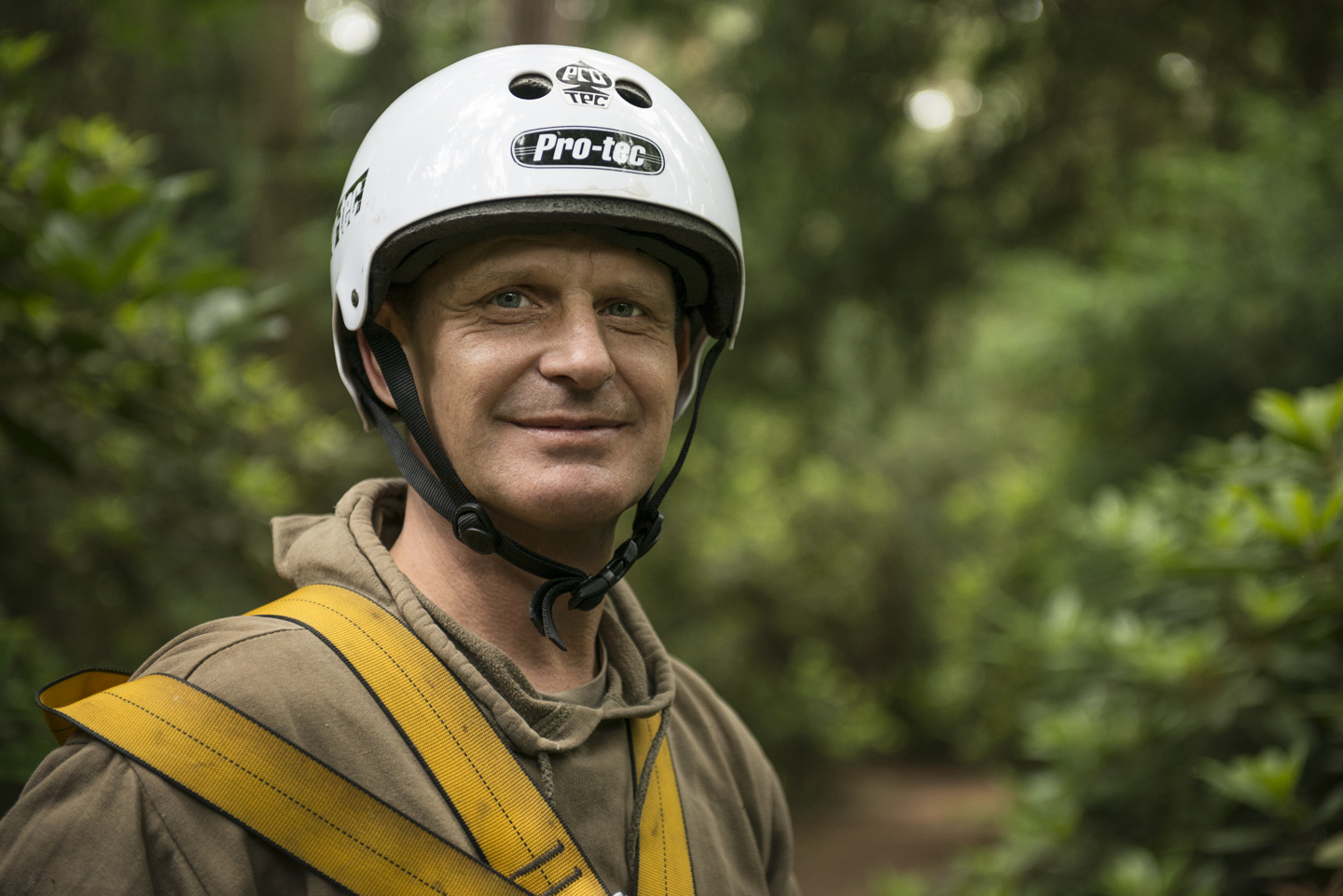
Dr. Norbert Kenntner can age the nestlings by the size and spray-radius of droppings around the nesting tree
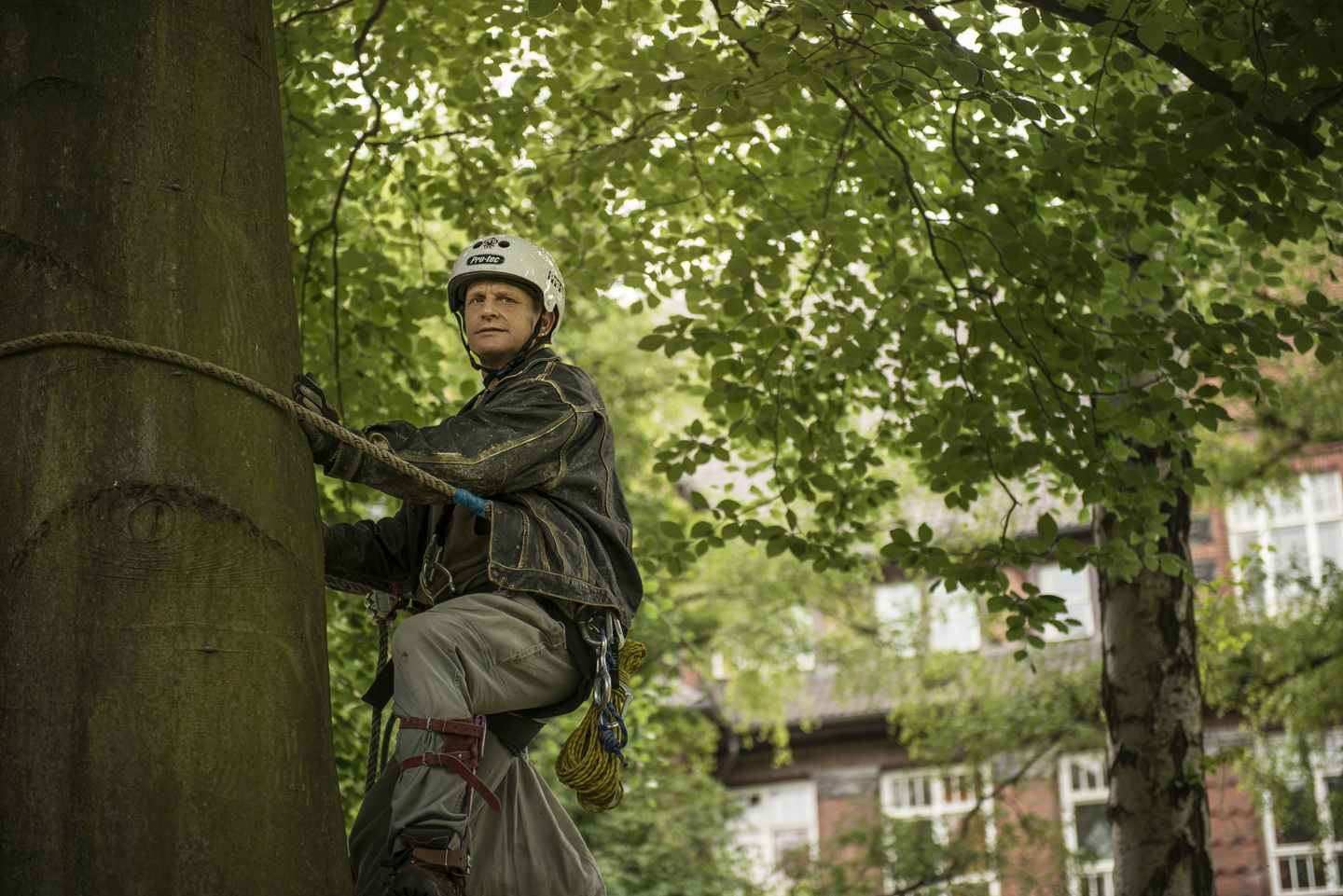
He wears a protective helmet and clothing when climbing - attacks by adults are uncommon, but can occasionally be relentless and fierce
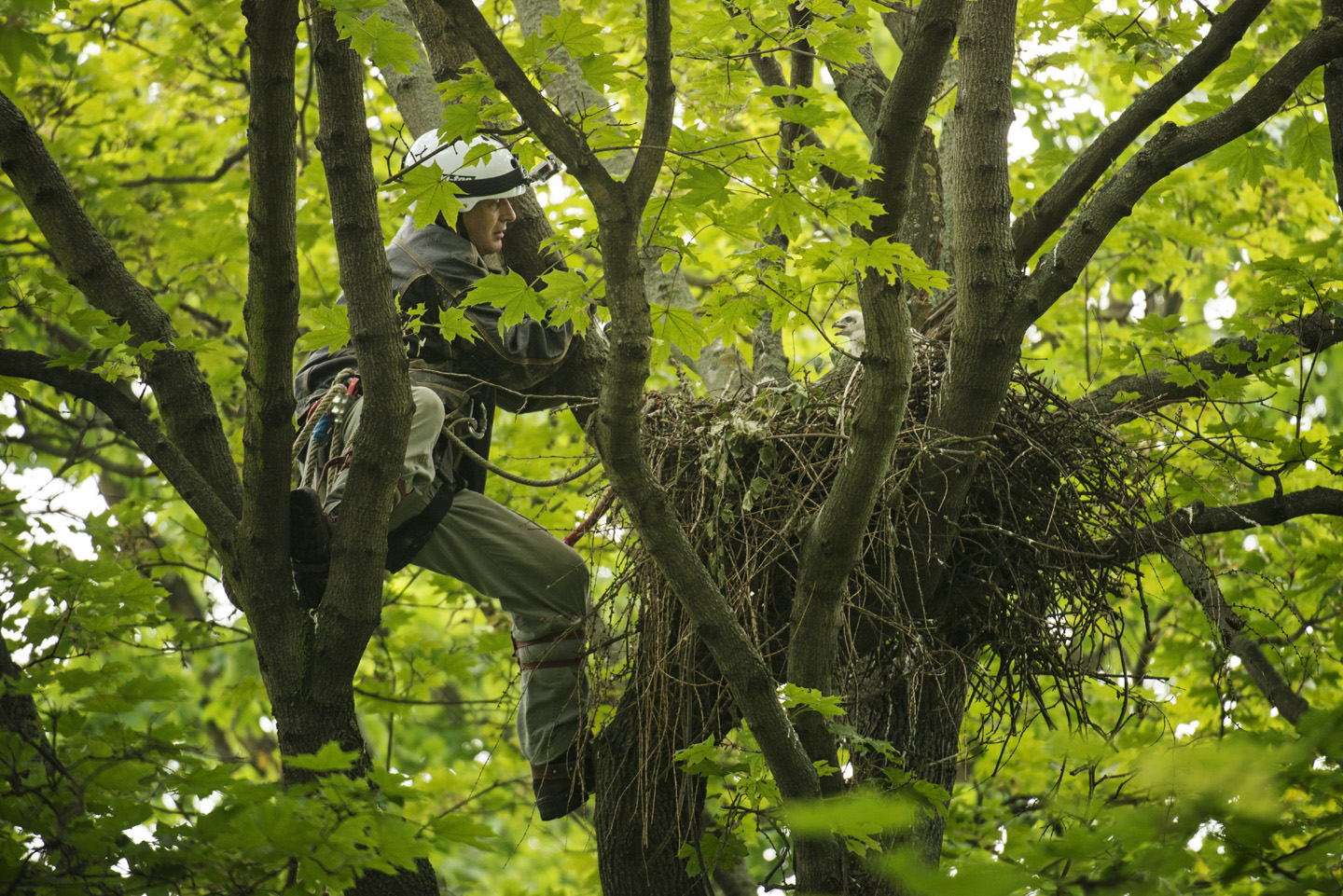
The nest can be over 1.5 metres wide and over a metre deep
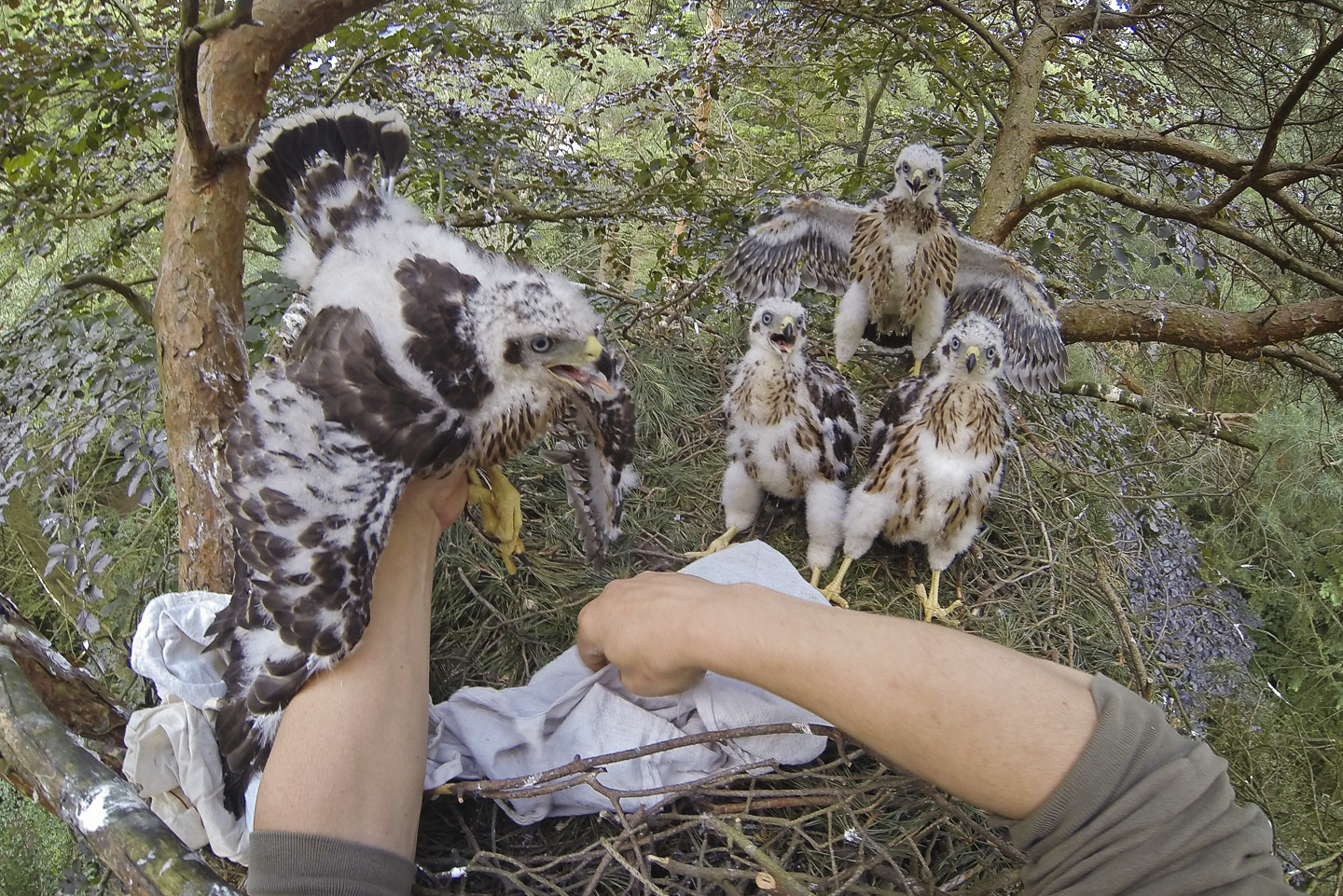
There are usually between 2 - 5 nestlings, with 3 or 4 being most common. The species of nesting tree is recorded, as is the leafy "greening" that lines the nest
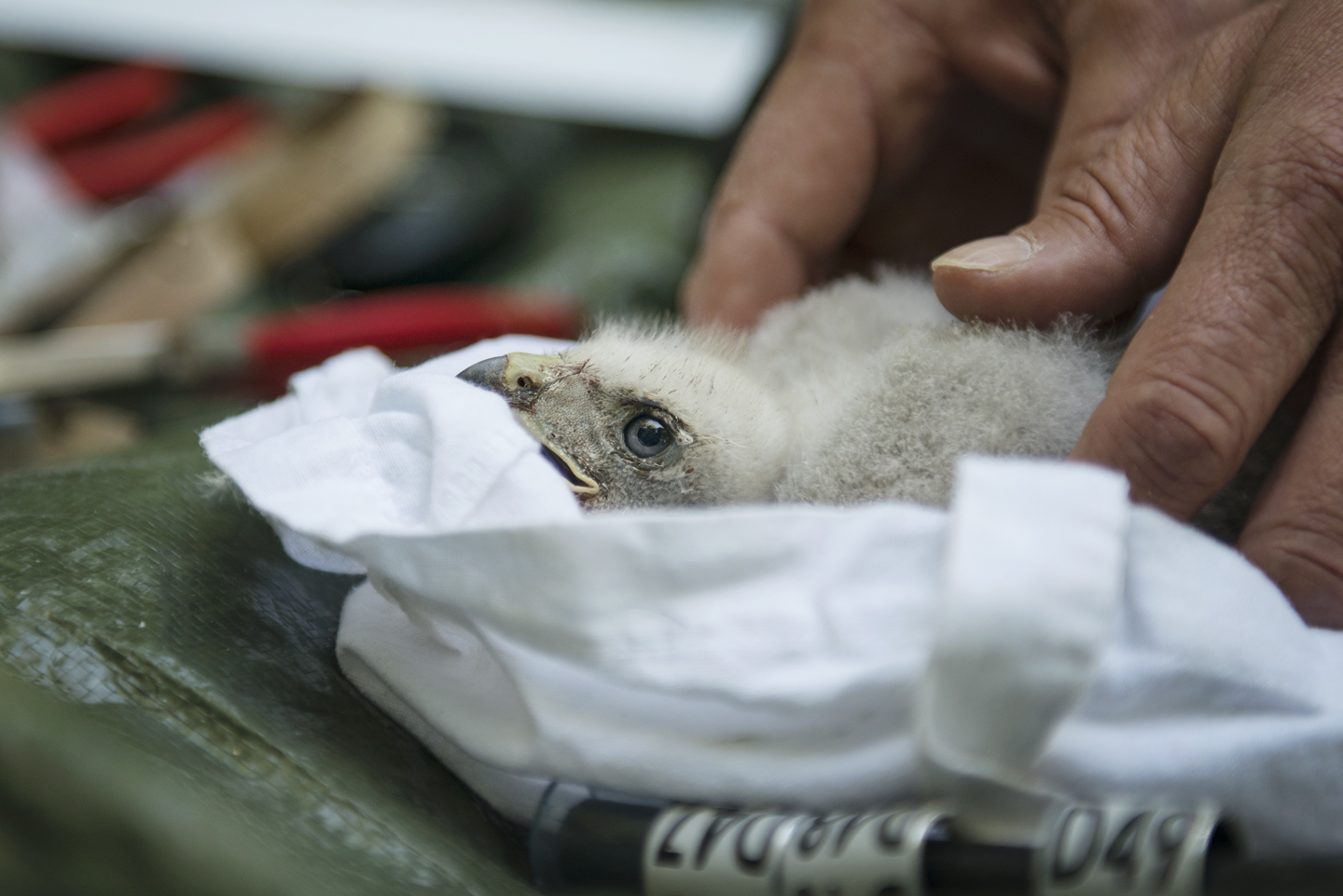
The nestlings are carefully placed in soft canvas bags and lowered to the ground
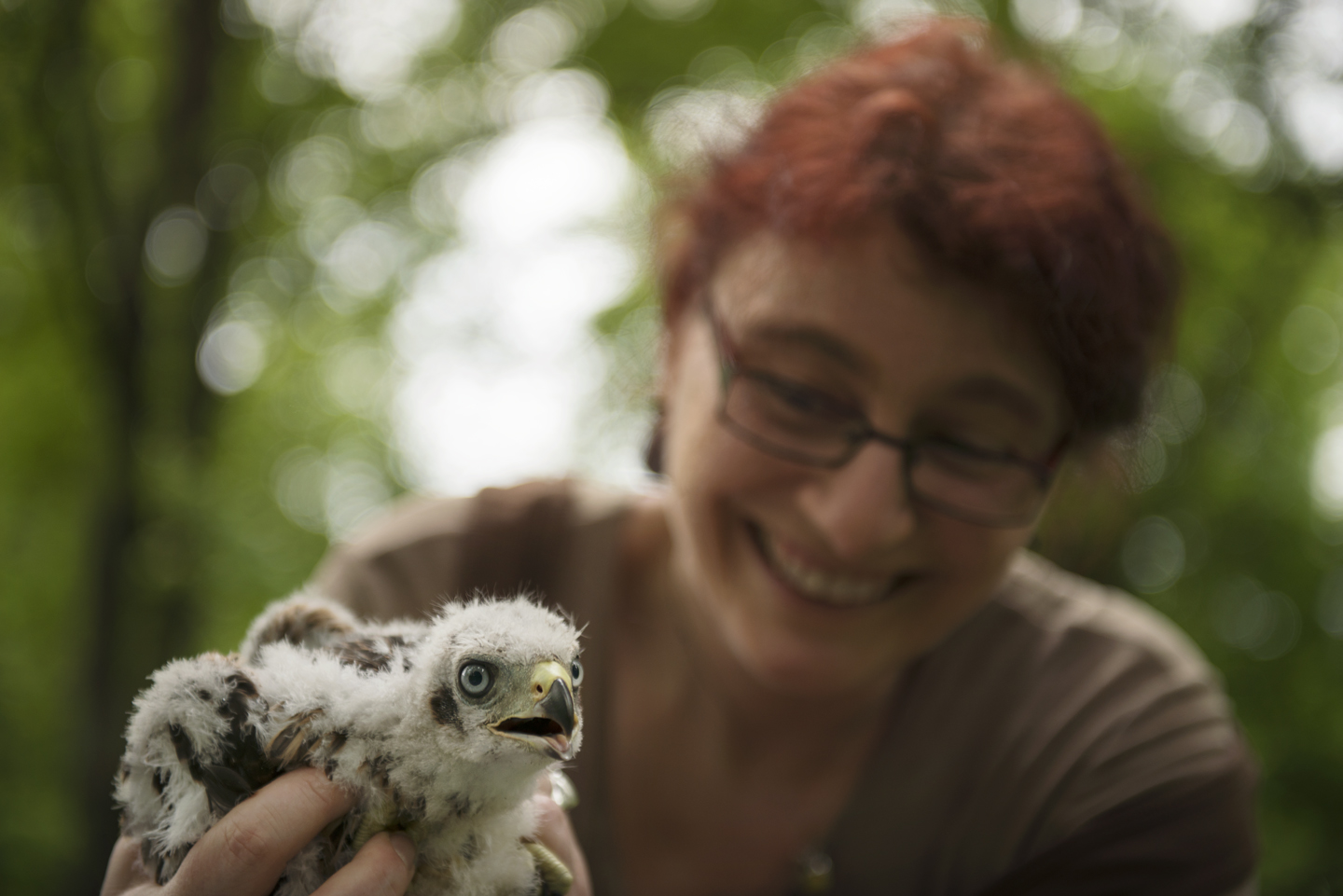
At ground level, the chicks can be handled and processed more easily and quickly
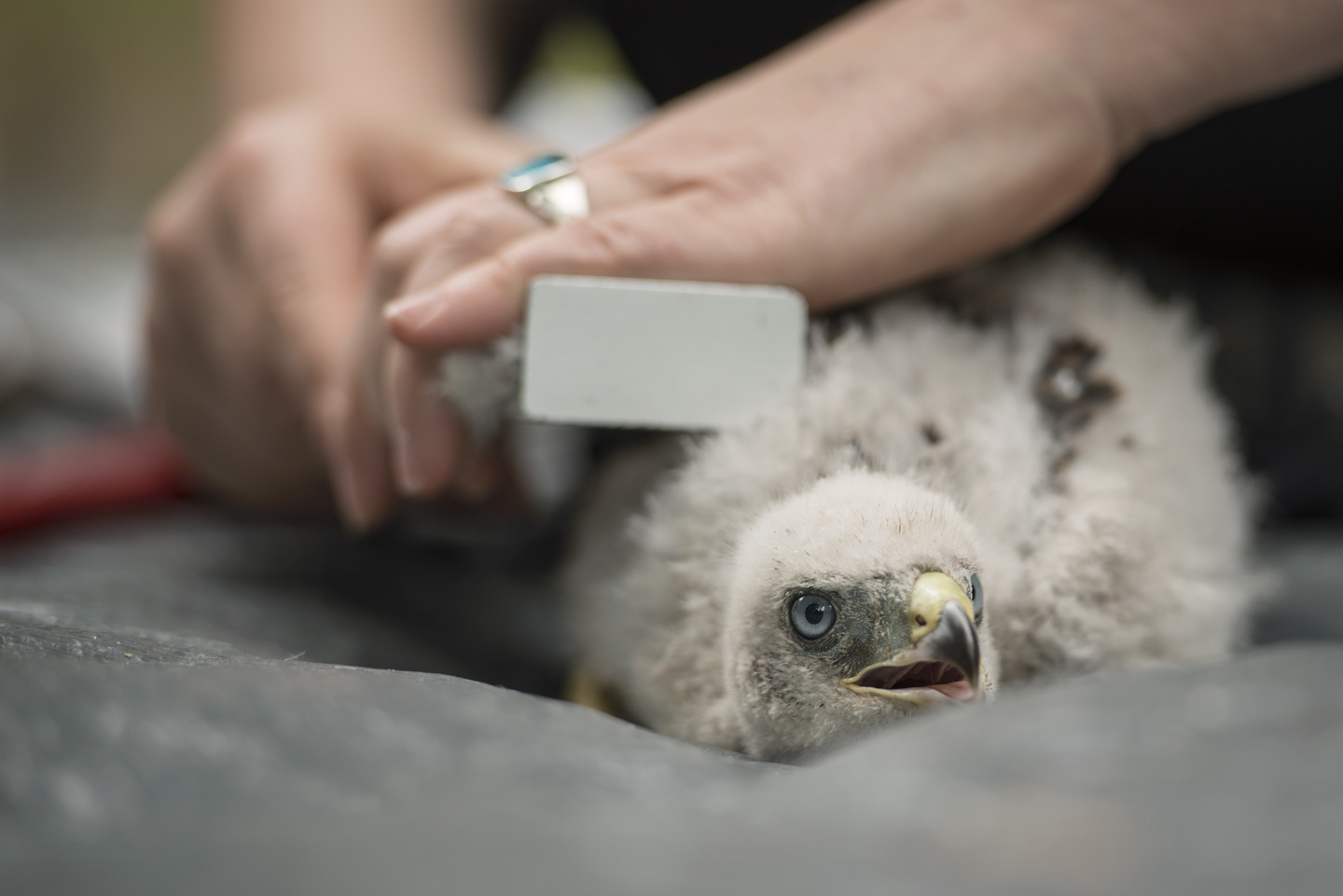
Measurements such as wing-length are systematically recorded
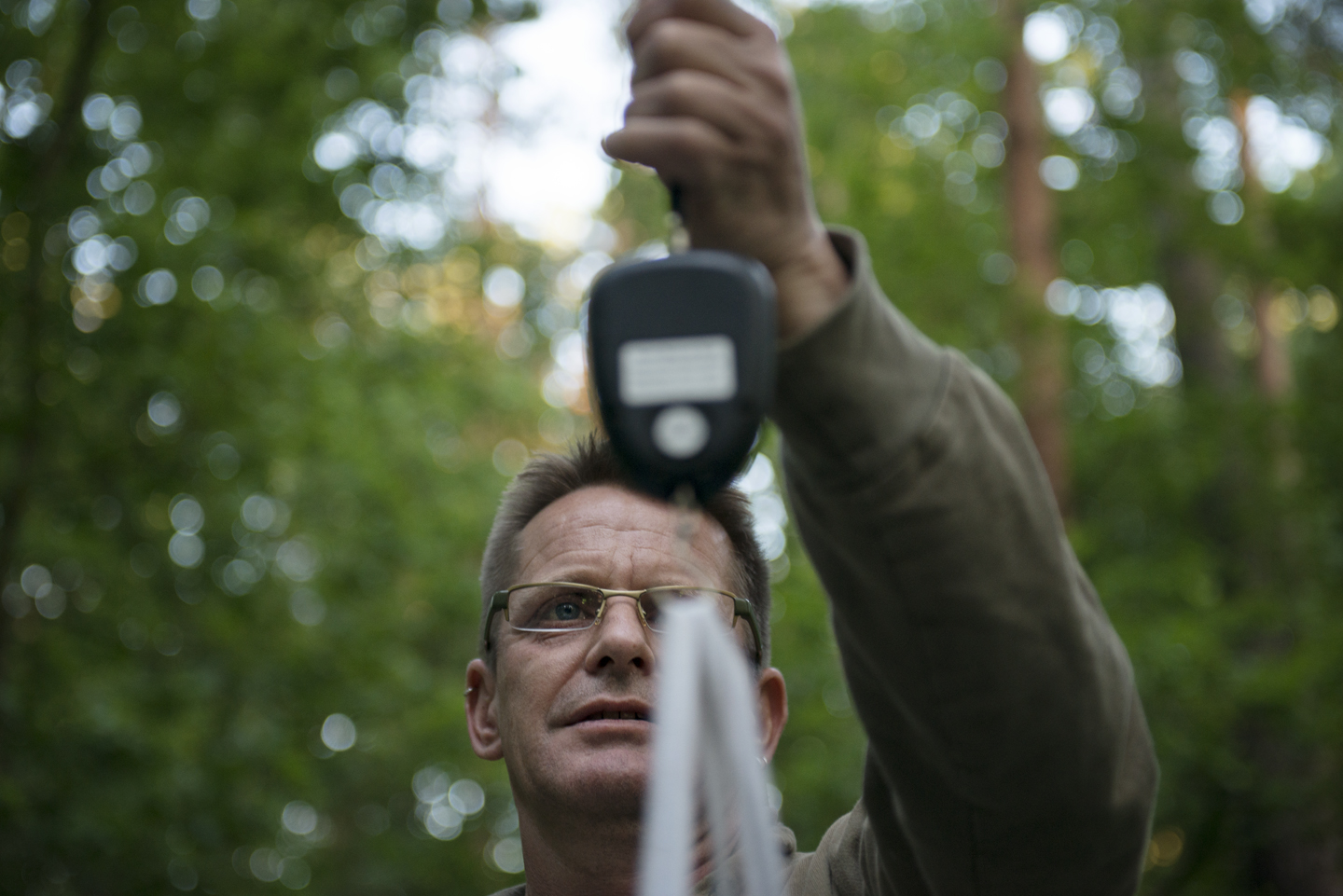
The chicks are weighed, which combined with their measurements can conclusively determine the sex of each nestling
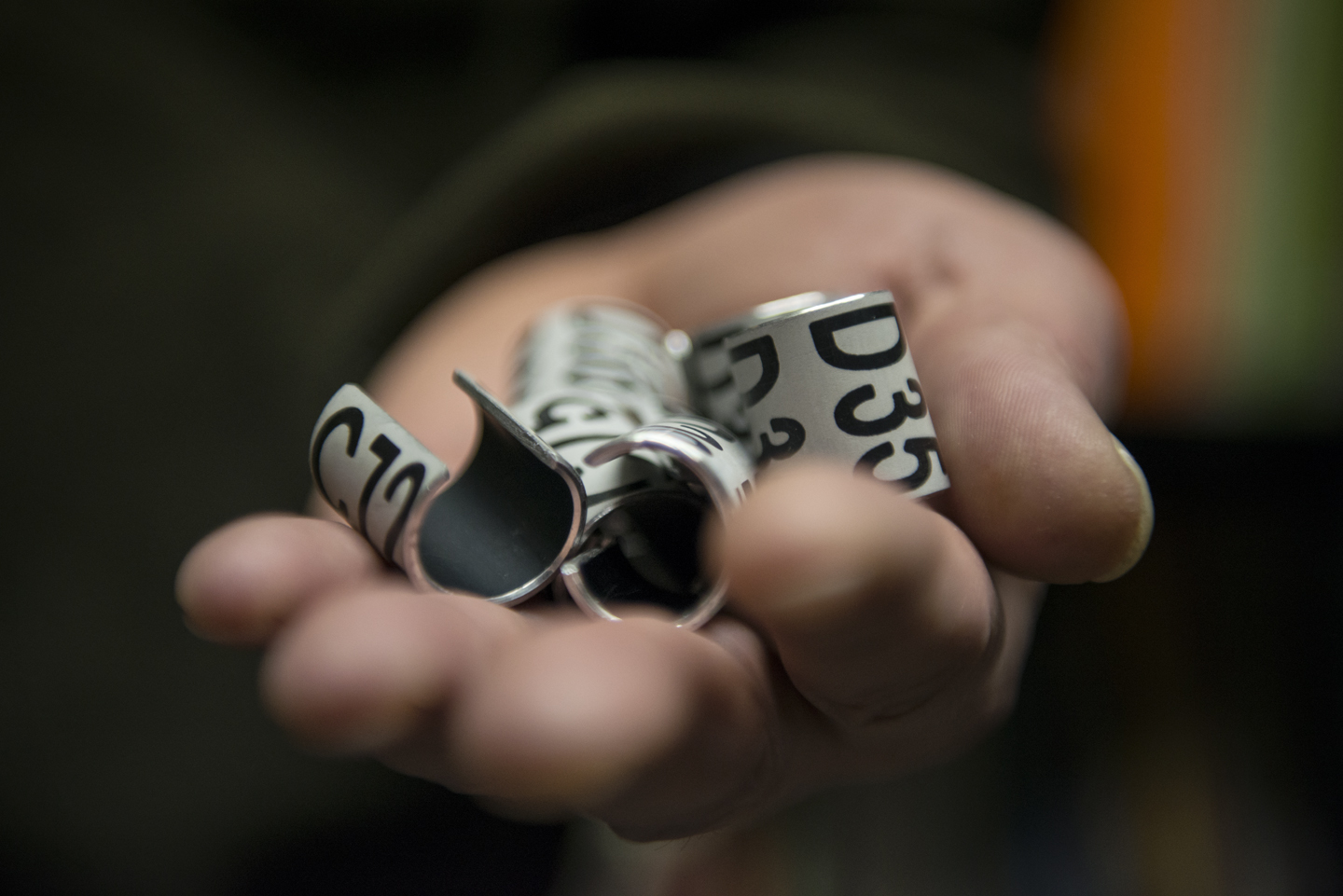
Colour-rings are attached to the nestlings, which can be read from a distance. Data from recoveries and subsequent sightings is invaluable to scientific study of the urban goshawk
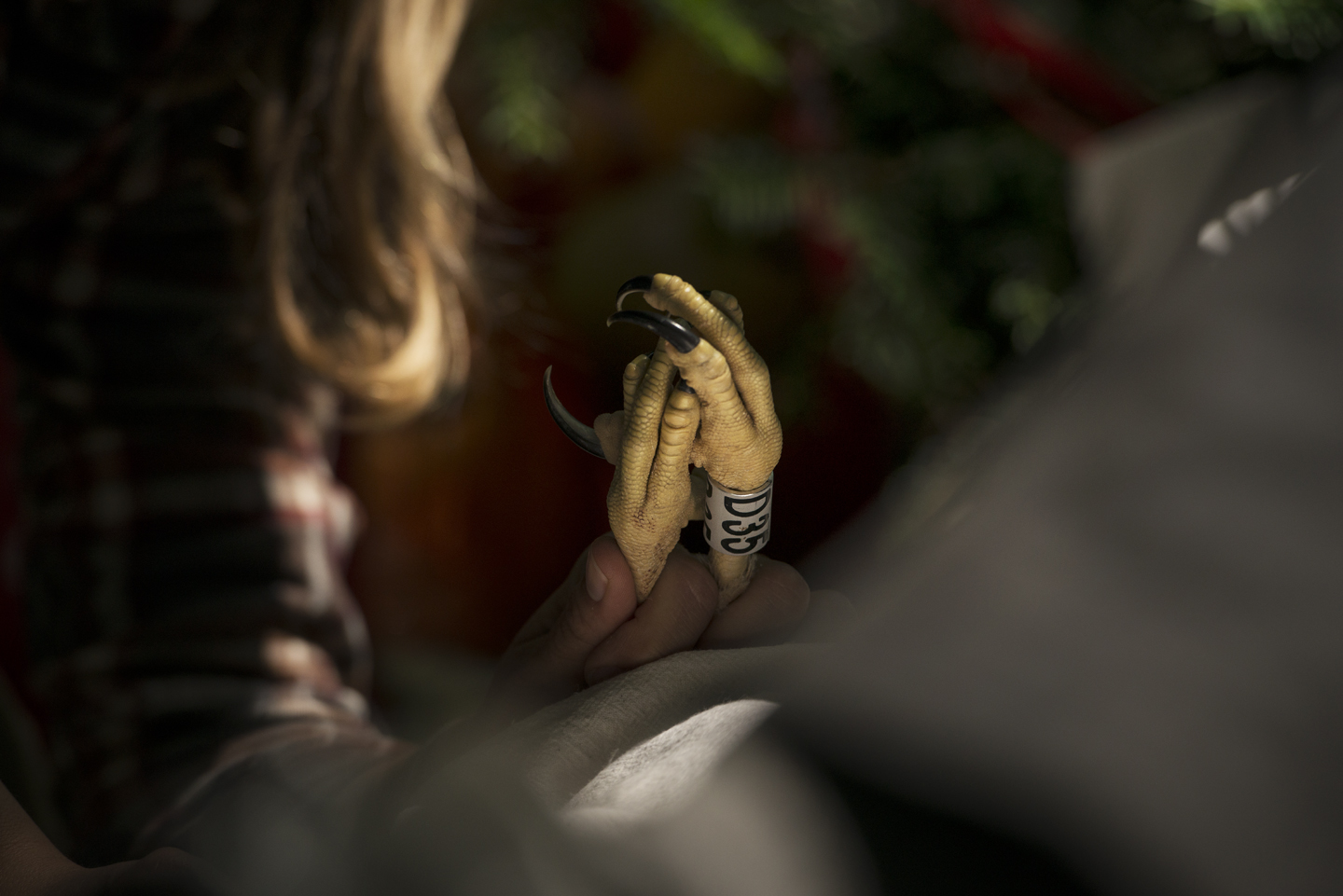
The colour-ringing project is investigating age and origin, reproductive success, site fidelity, territory size, exchange of partners, proportion of non-breeders and helping to answer many other questions
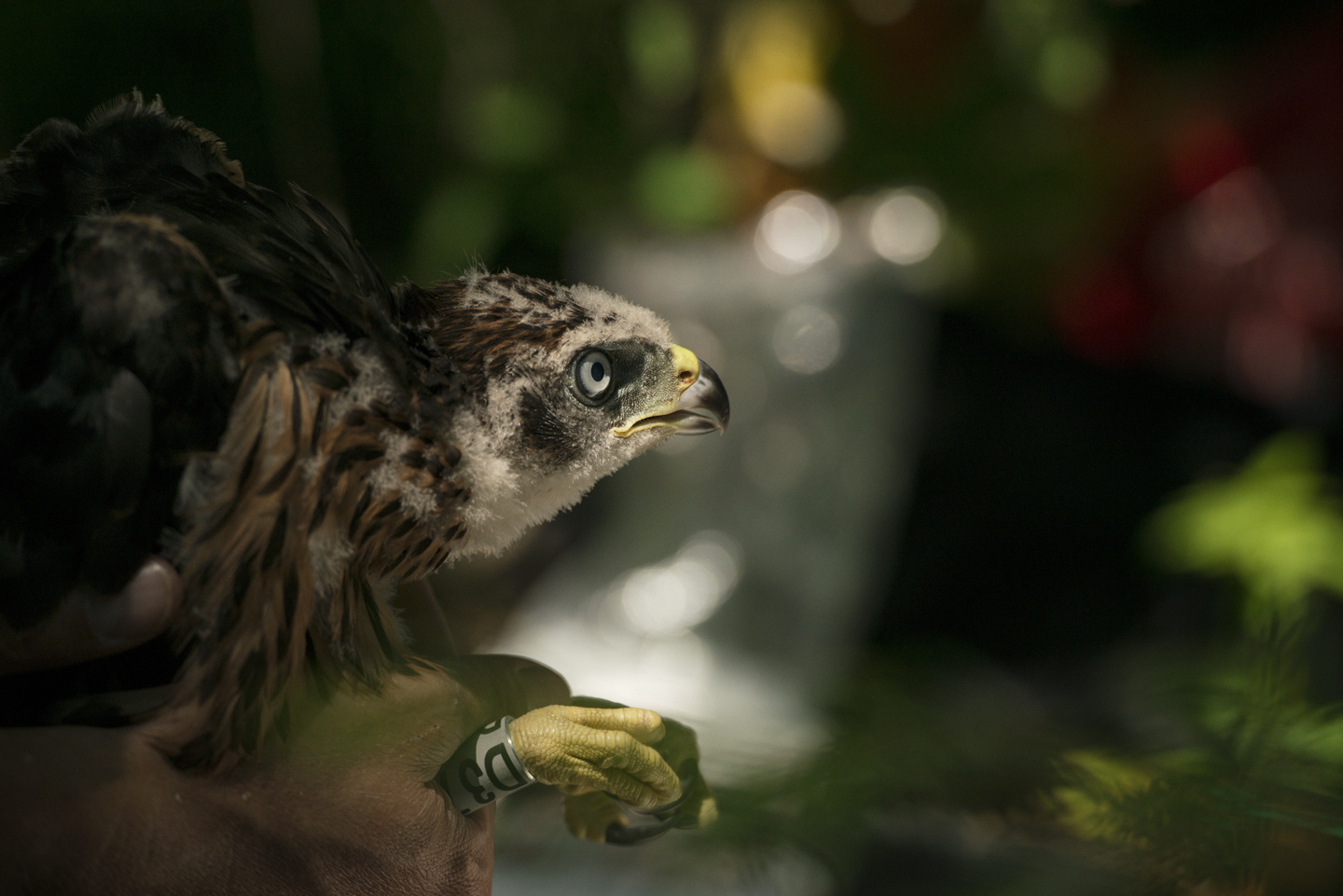
The nestlings are ringed from between 2 and 5 weeks, starting in mid-May. Birds in Dr. Kenntner's area are ringed with the colour-ring on the right leg and conventional ring on the left
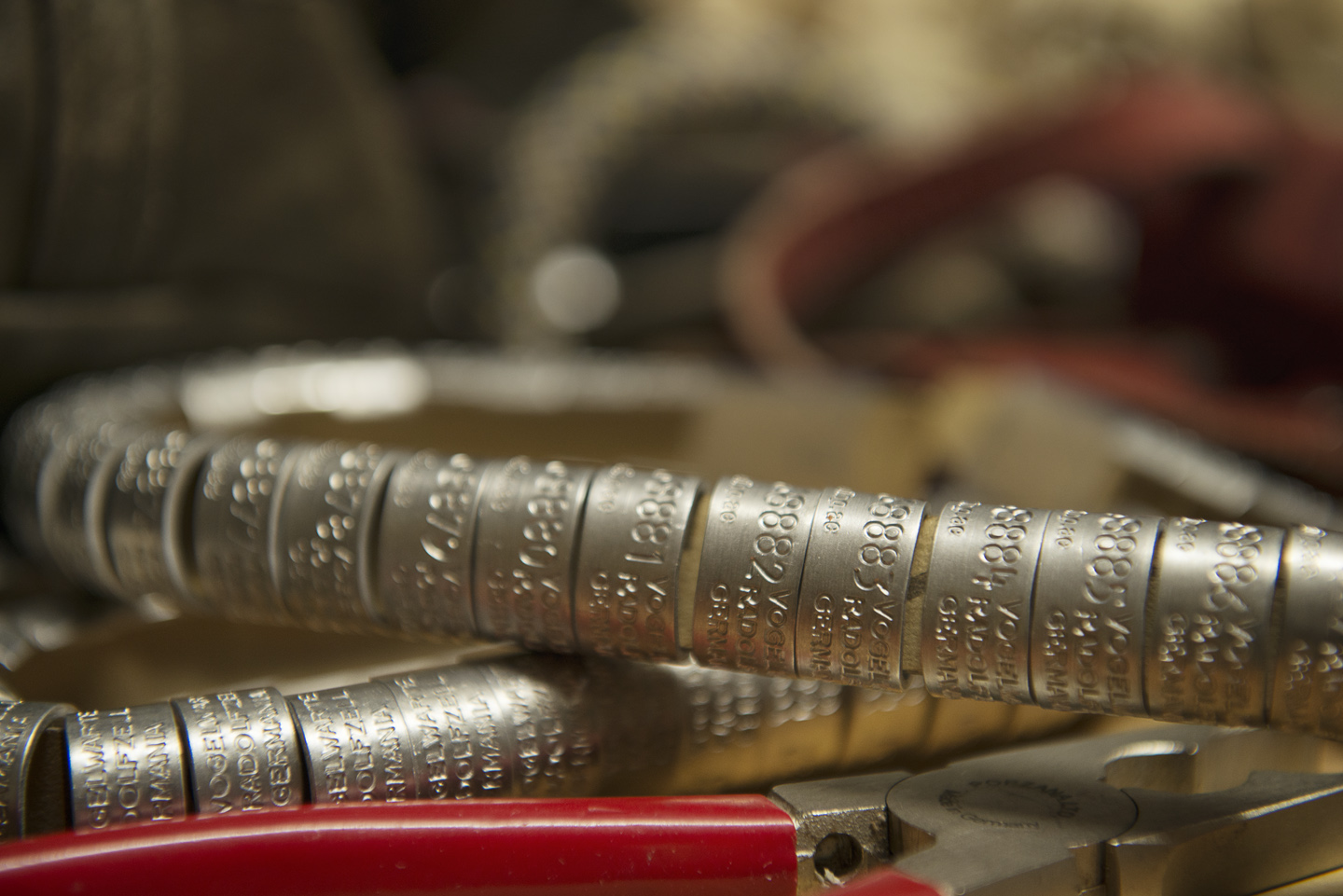
The conventional Radolfzell goshawk rings come in 2 different sizes. Like many raptors, goshawks are sexually dimorphic - the females being much larger than the males
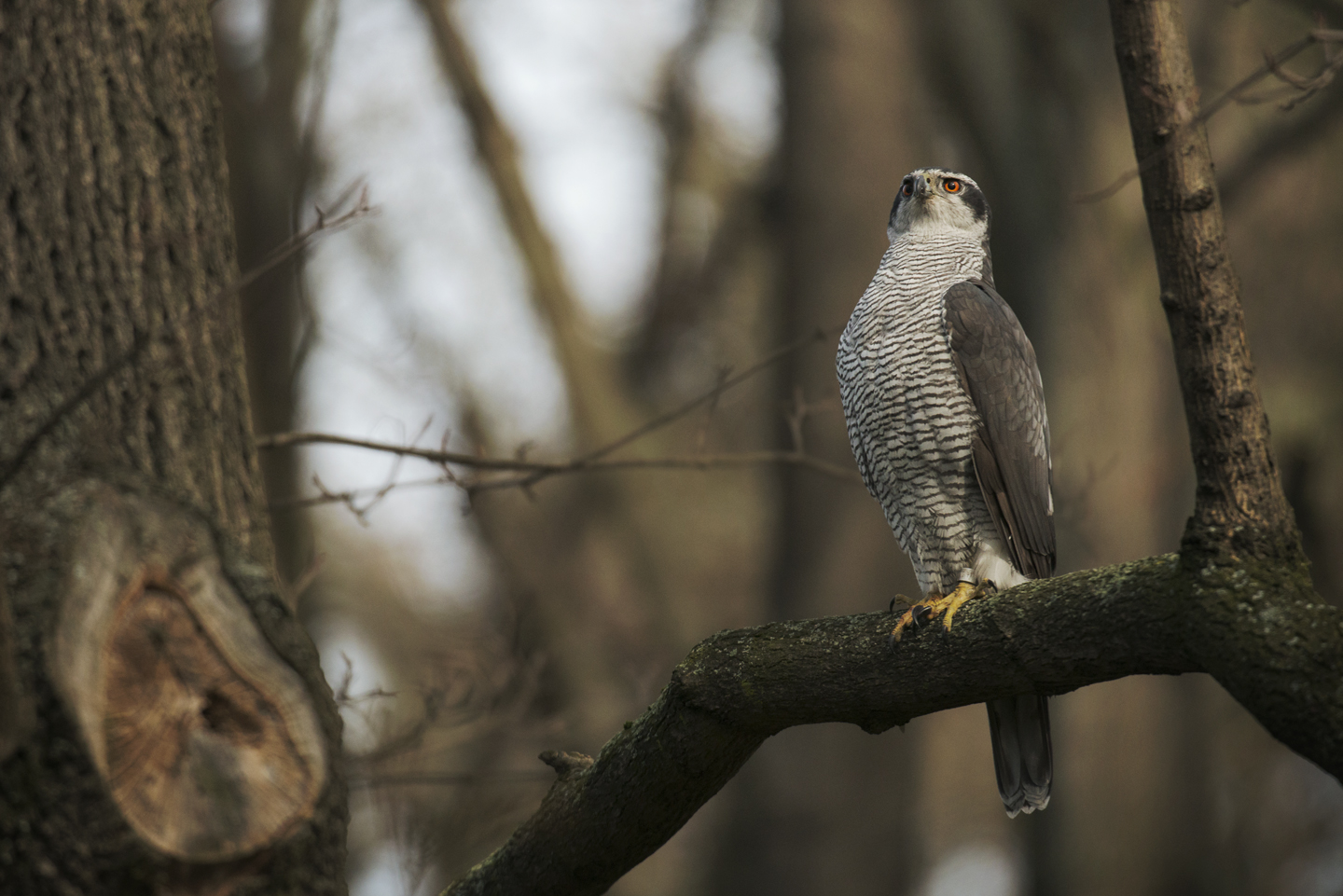
The goshawk colour-ringing project is now (2014) in it's third year, but conventional ringing goes back much further. This old male, known locally as "Methusalem", was ringed as a nestling over 15 years ago
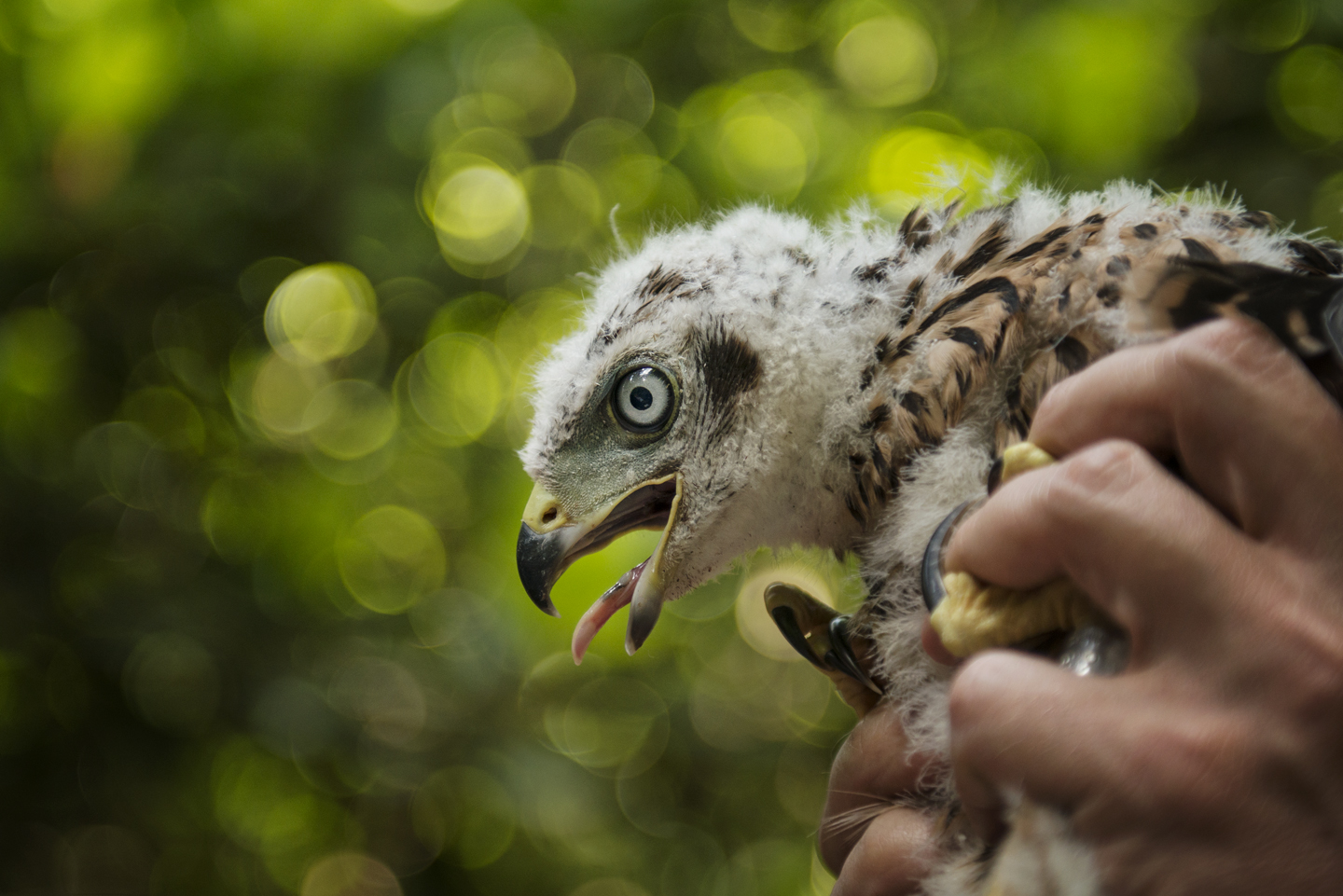
Unlike Methusalem, the nestlings begin life with pale blue eyes. They turn grey-green by fledging, deep yellow in their first year, rich orange as they mature and finally ruby red in old age
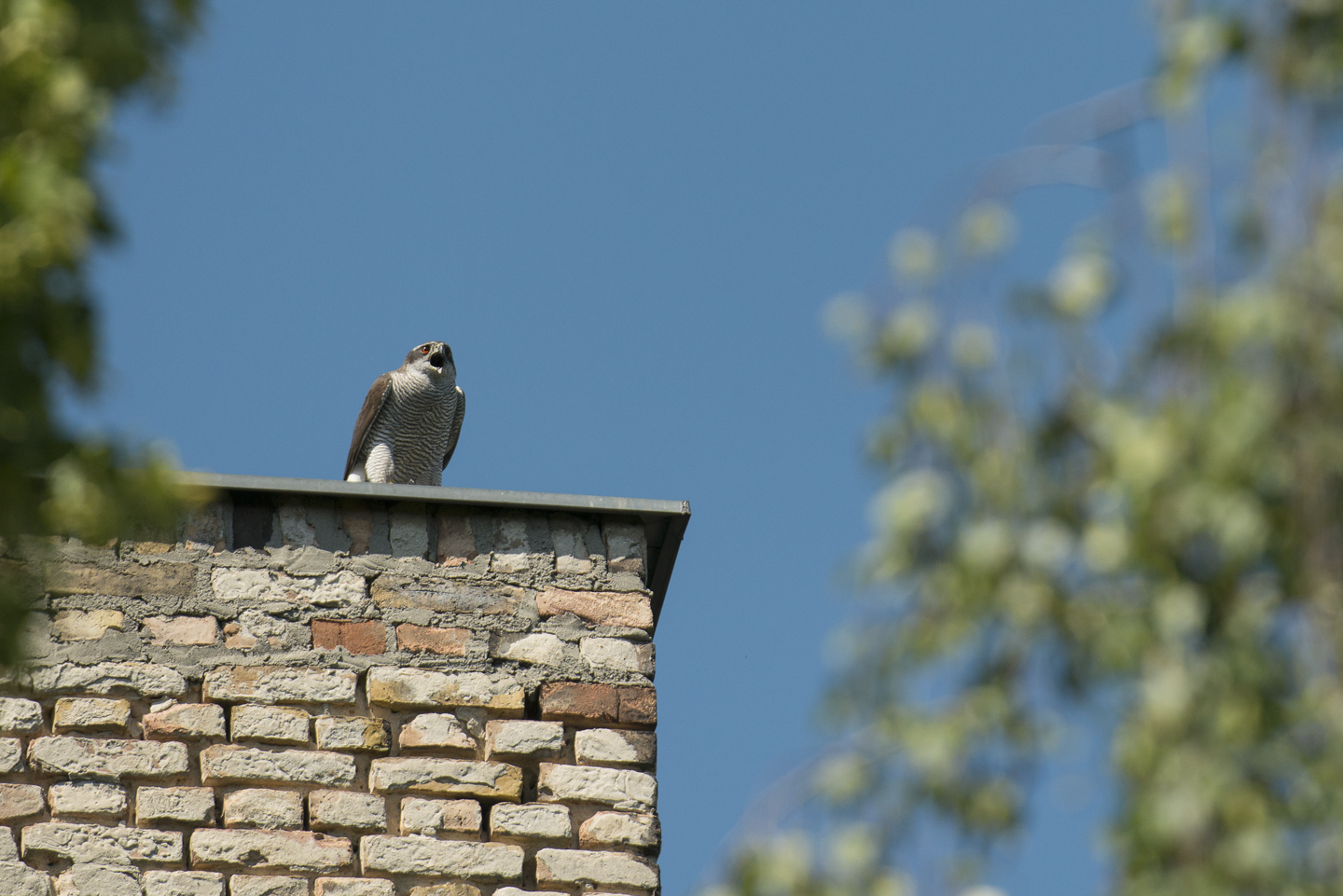
During ringing, the climber waits in the tree-top, while the adult goshawks often keep a close watch from a nearby perch
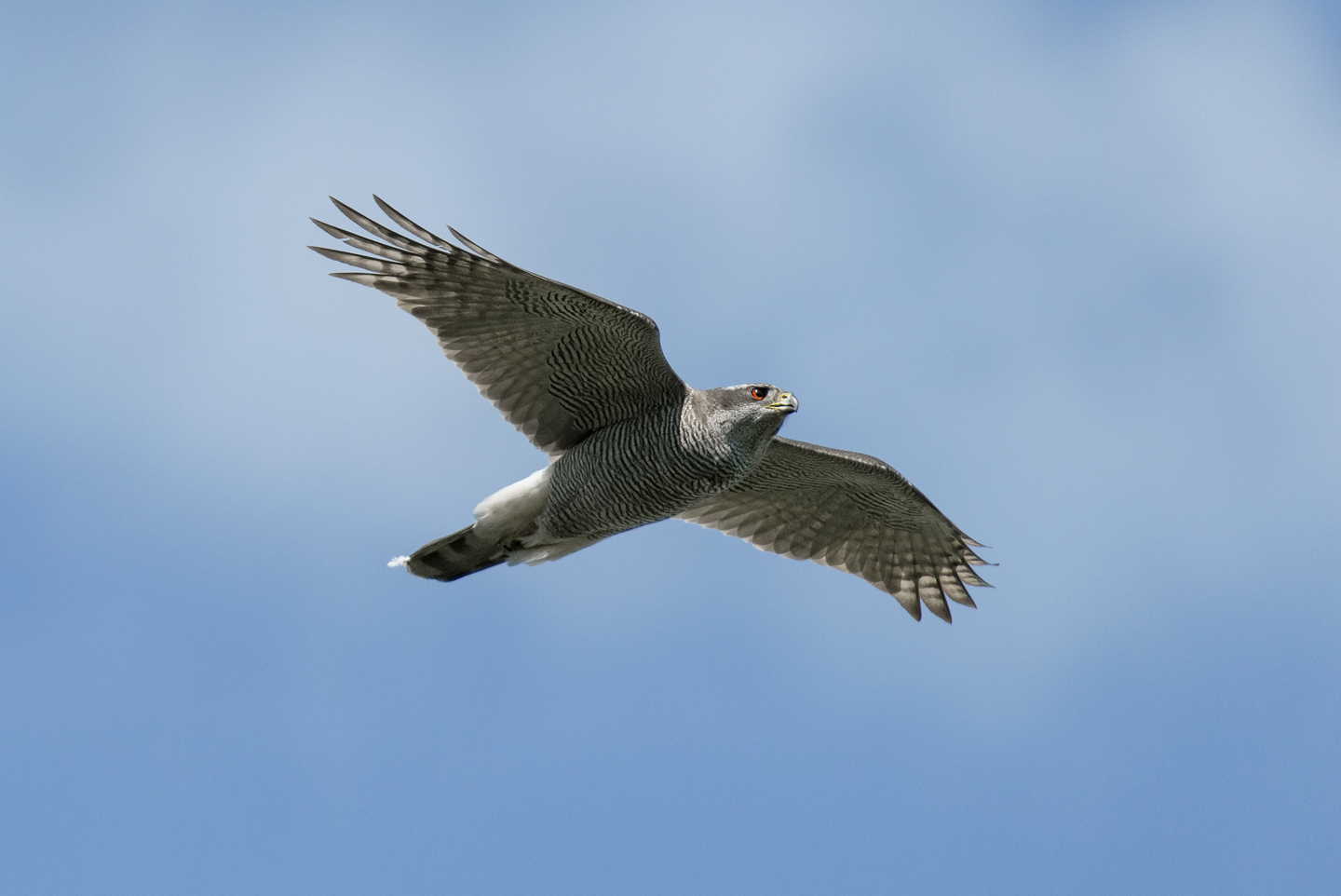
They regularly make much closer fly-bys to get better views of the proceedings
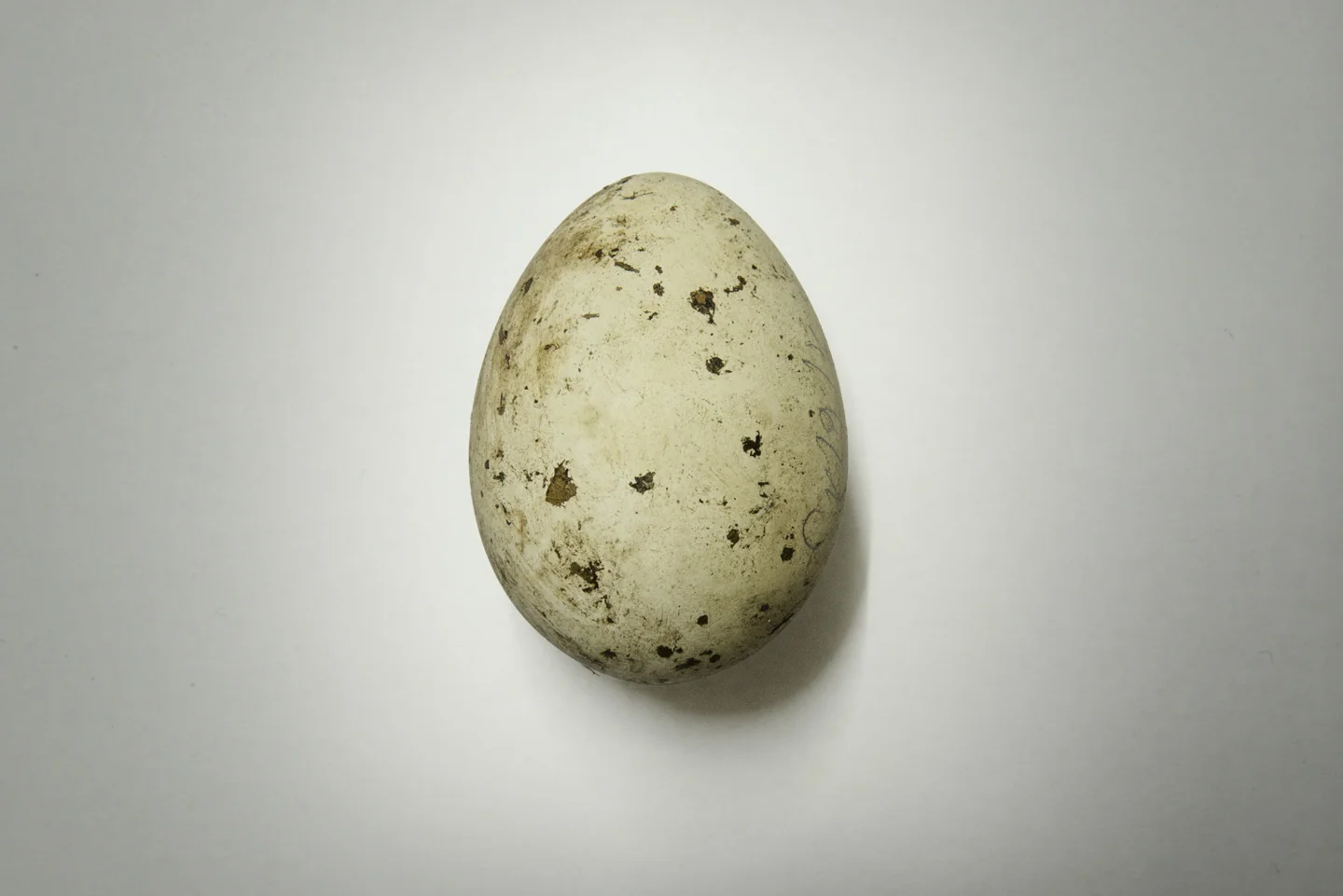
The climber removes the unhatched addled eggs from the nest, which are labelled and taken for scientific analysis
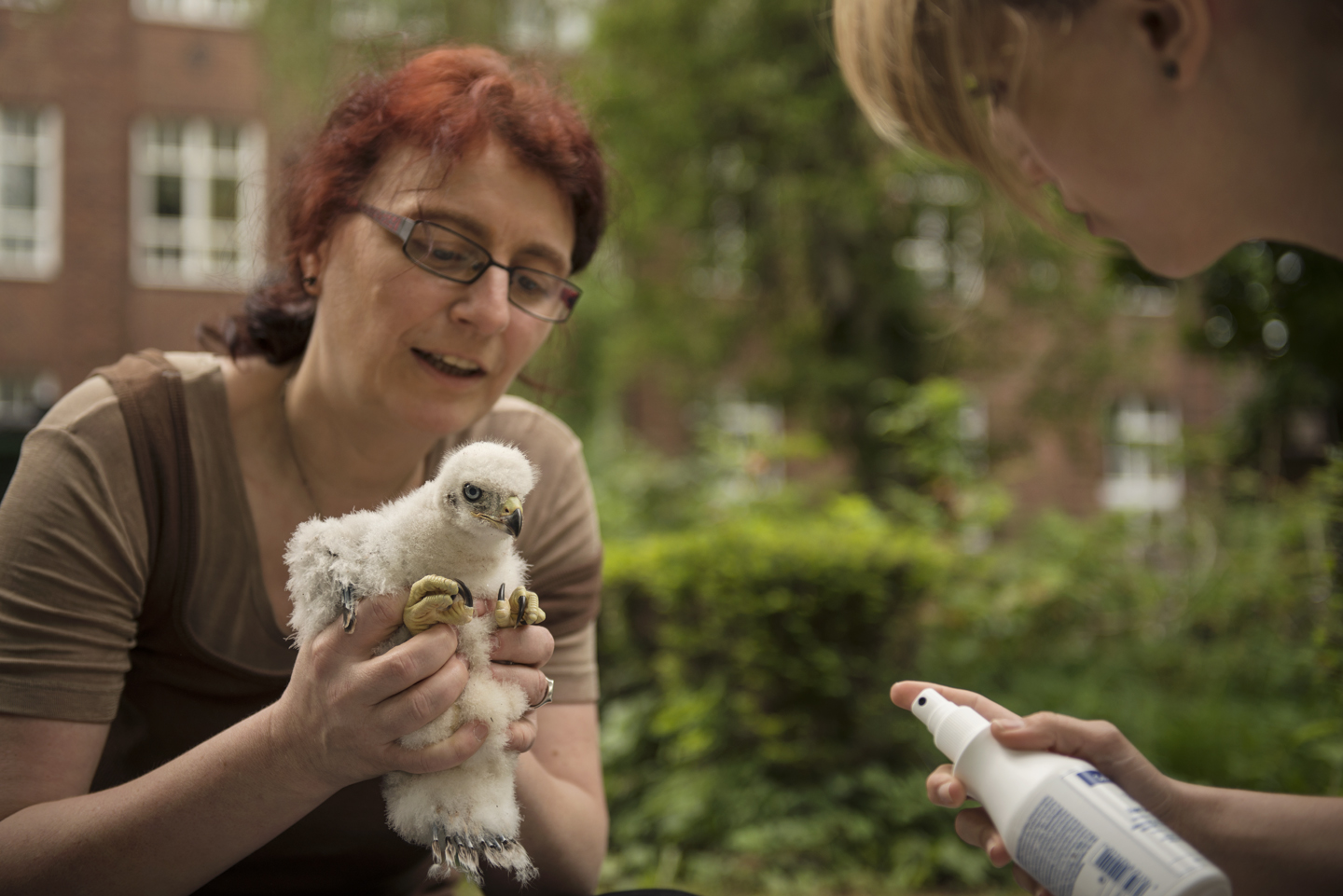
After ringing, swabs and feather samples are taken from the nestlings

Crop samples are taken to test for diseases like trichomonosis, which has become quite common in urban goshawks and could be transmitted through their feral pigeon prey
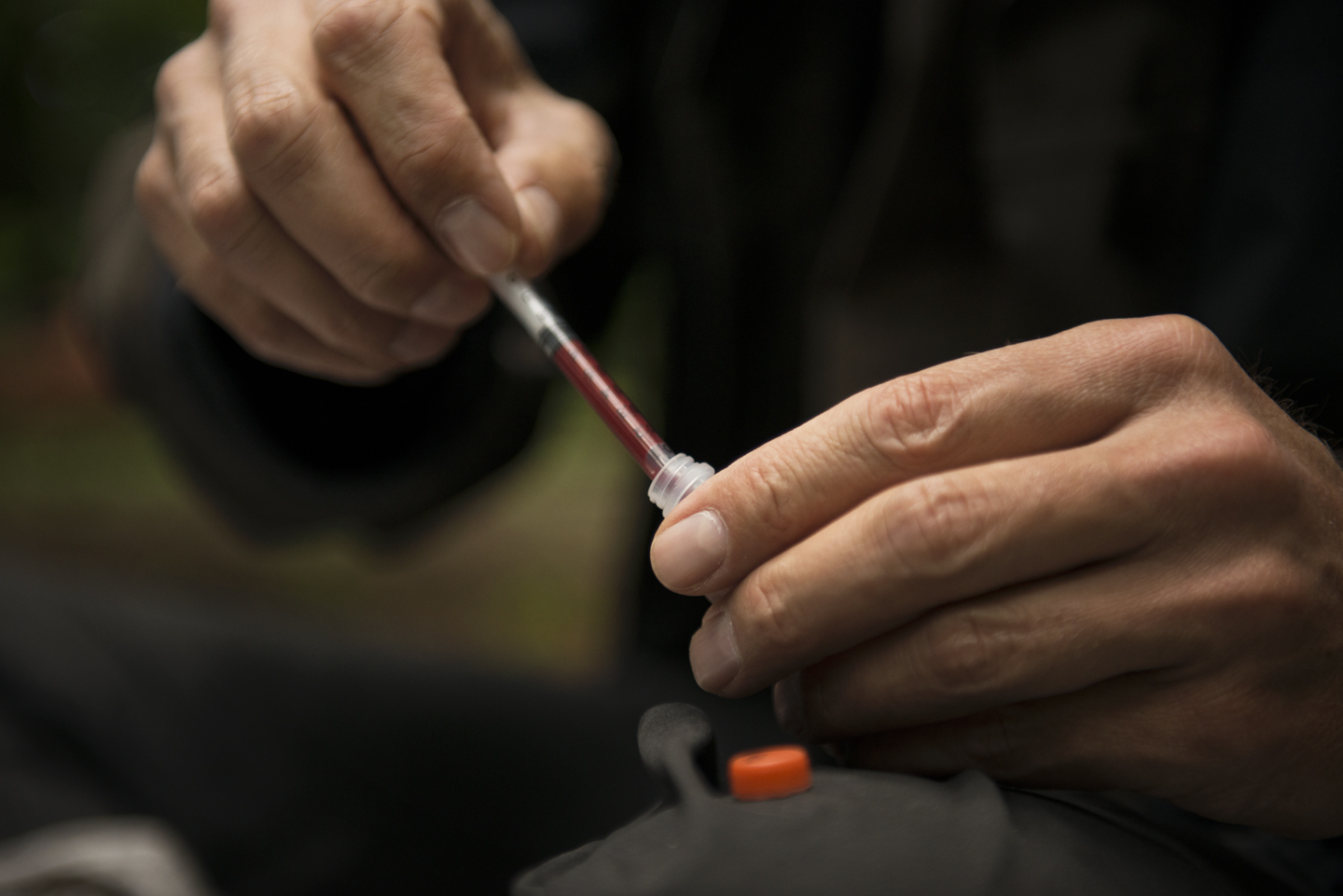
If the nestlings are old enough, blood samples are collected for DNA analysis and further testing
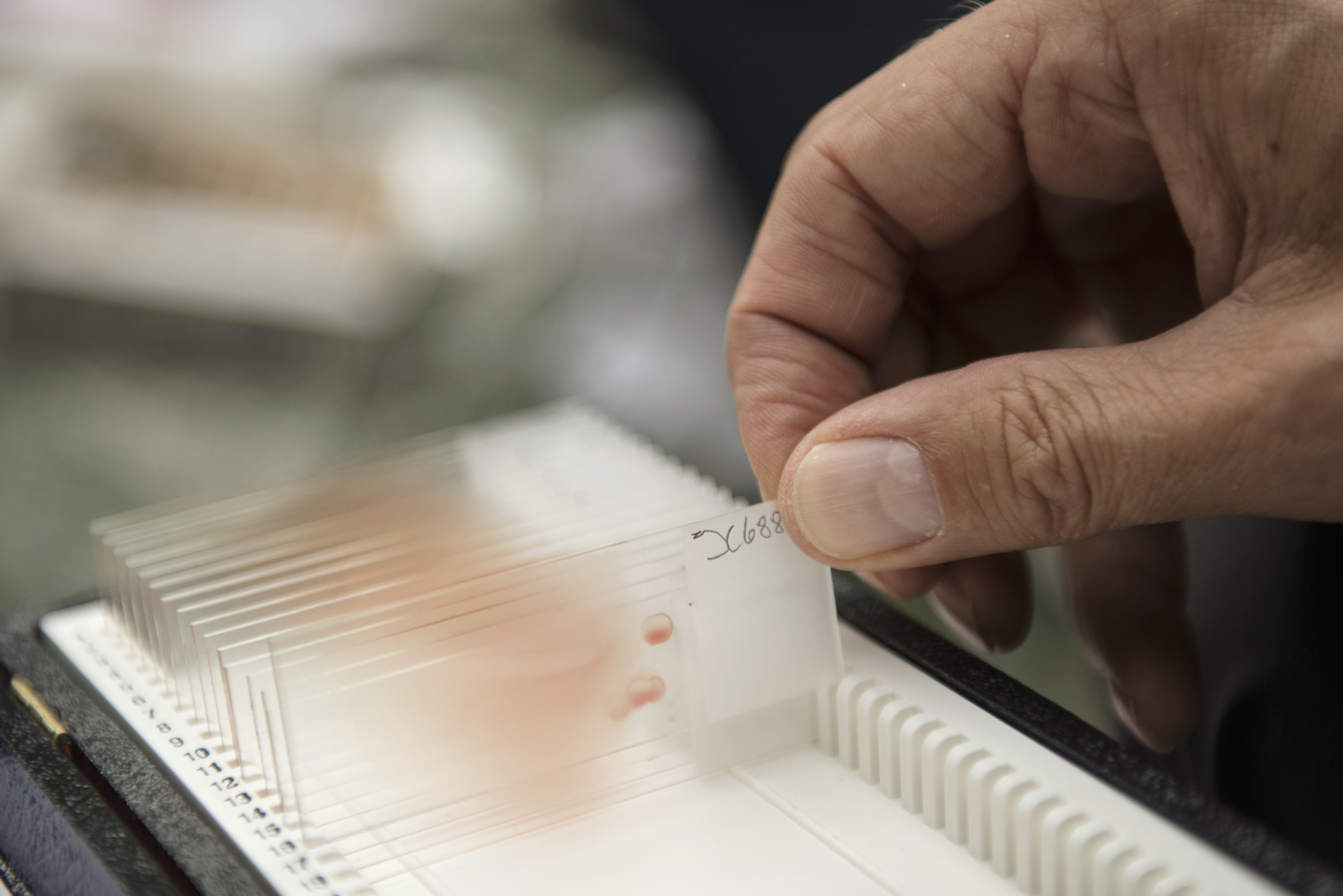
The blood slides, samples and data are used by Dr. Kenntner, NABU Berlin and the Leibniz Institute to gain a better understanding of the health of Berlin's goshawk population
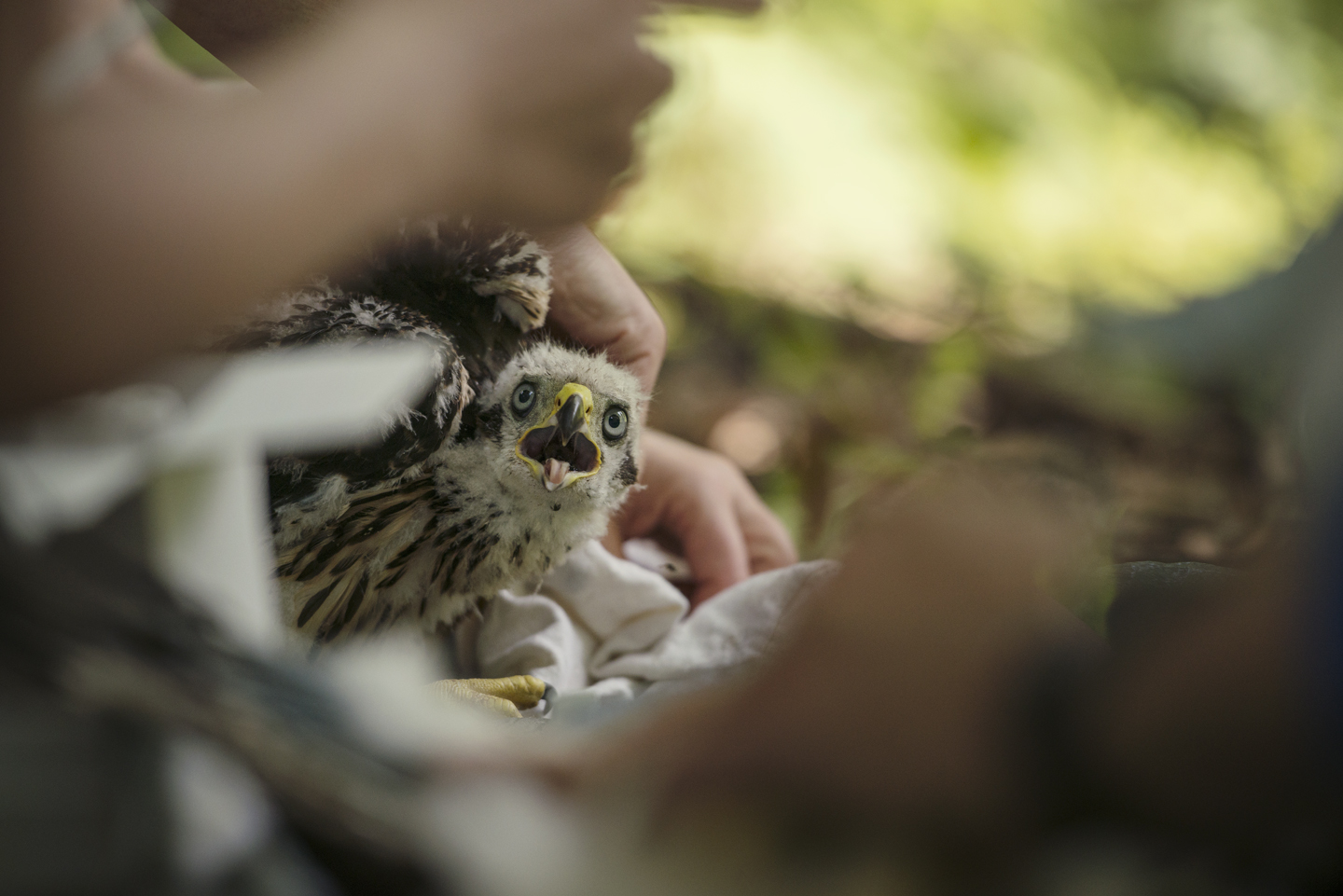
The ringing process can be traumatic, but the scientists and ringers work quickly and the whole process is over in around 15 - 20 minutes
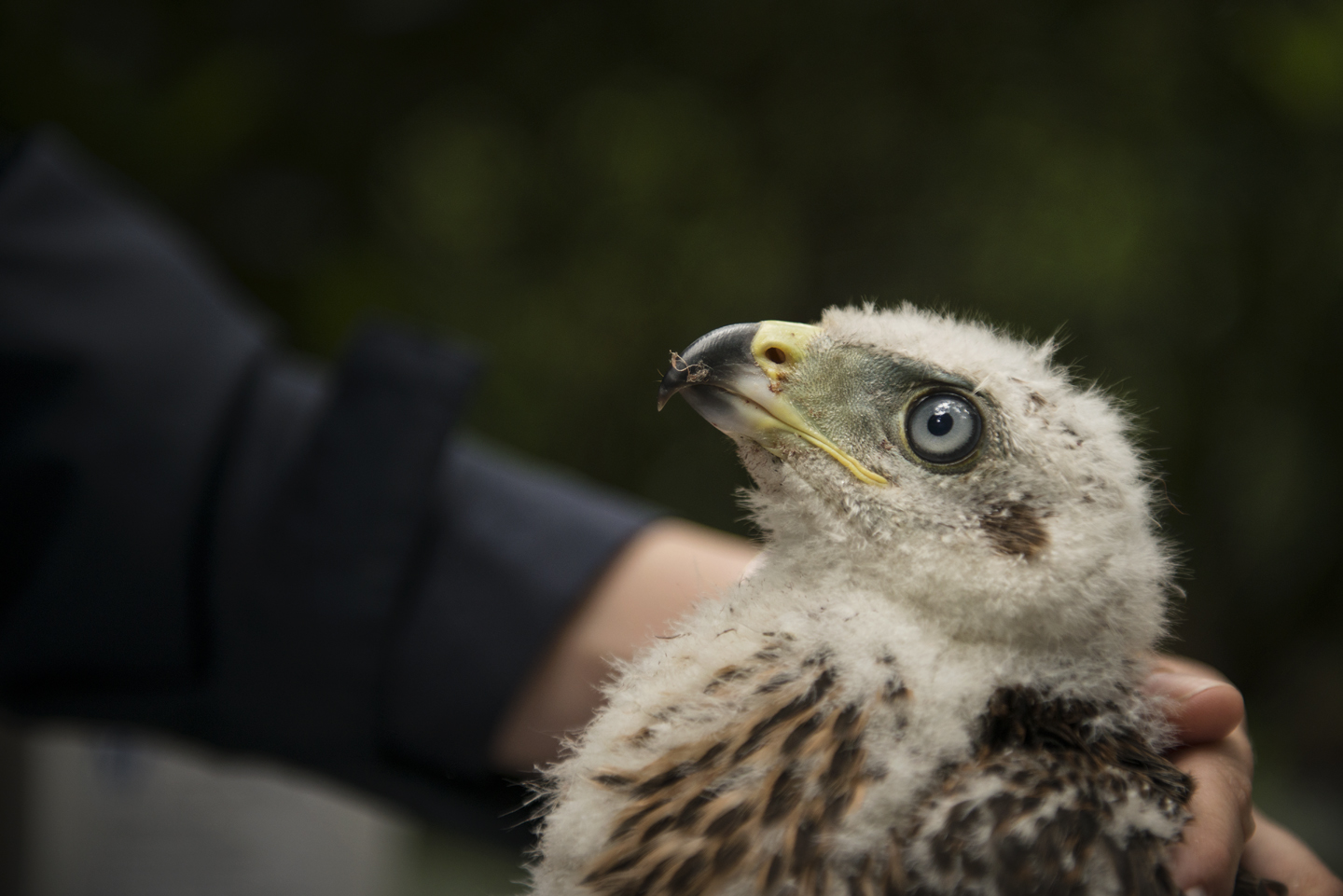
Their pride is only temporarily damaged and after ringing, the climber quickly raises them back up the tree, places them in the nest and abseils down
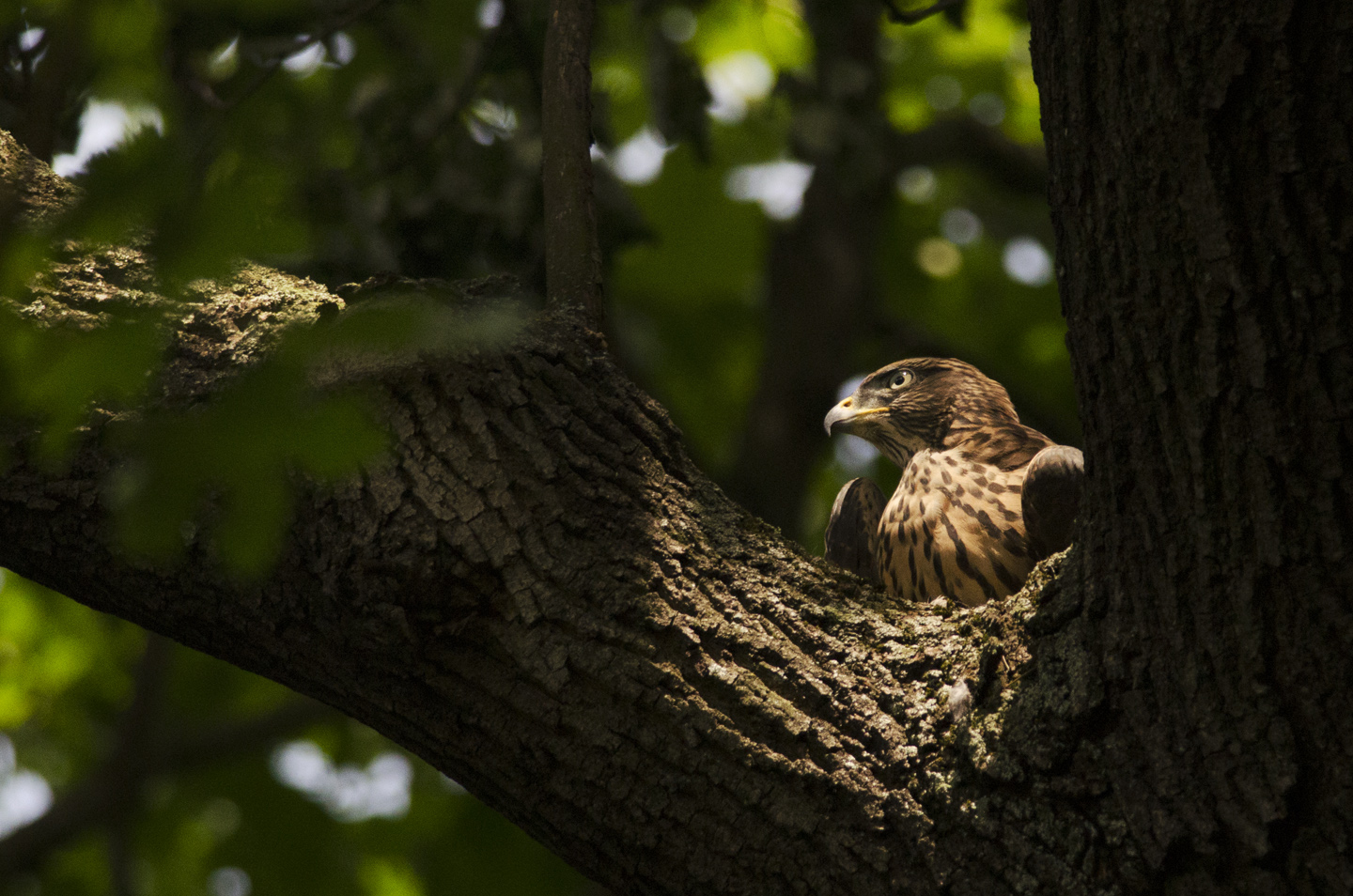
Back up in the canopy, the young continue to develop. Slowly the "branchers" explore the tree-top around the nest, in preparation for fledging
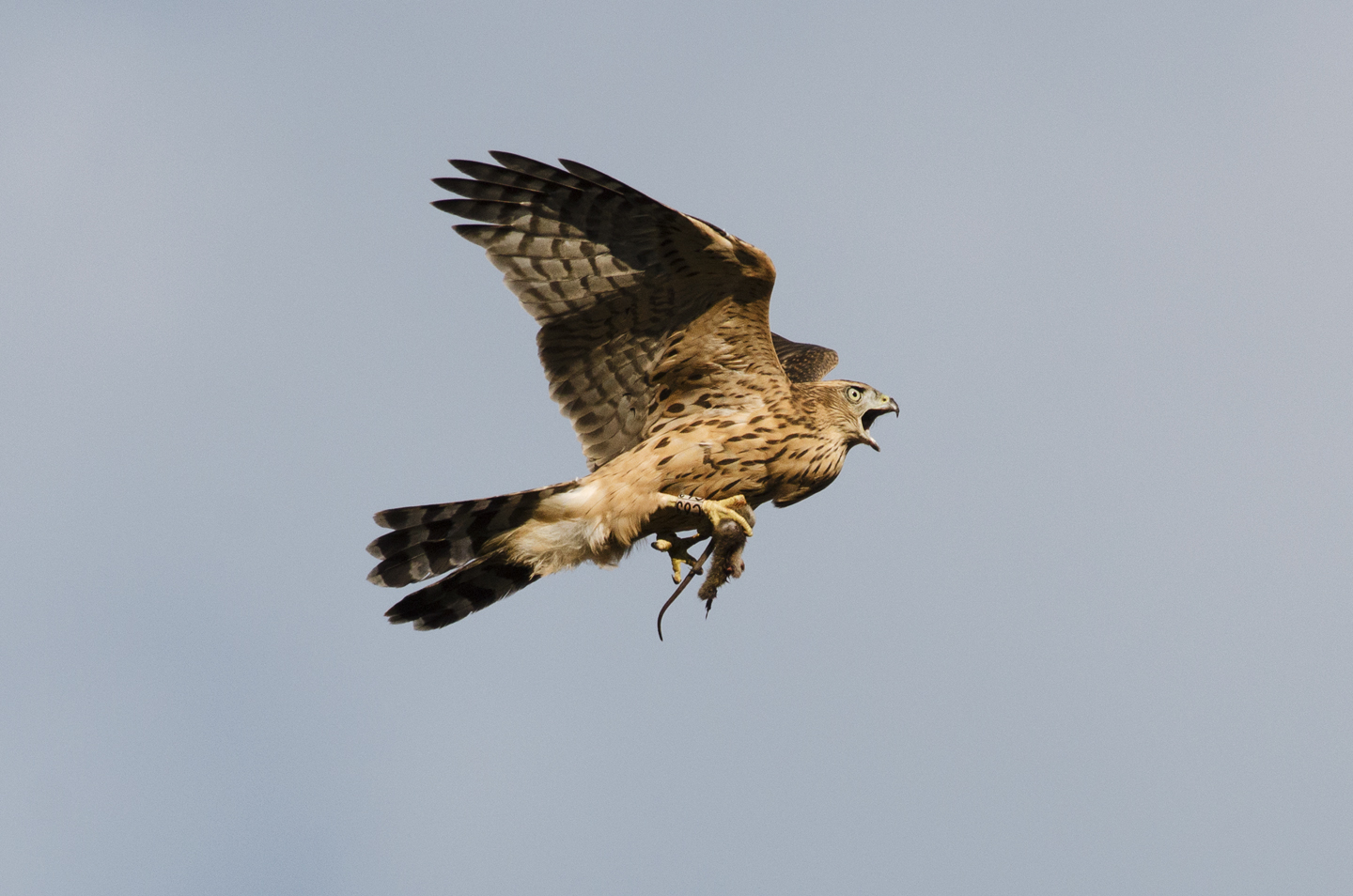
Once fledged, they remain dependent on the adults for food. This young juvenile is clutching the remains of a city rat
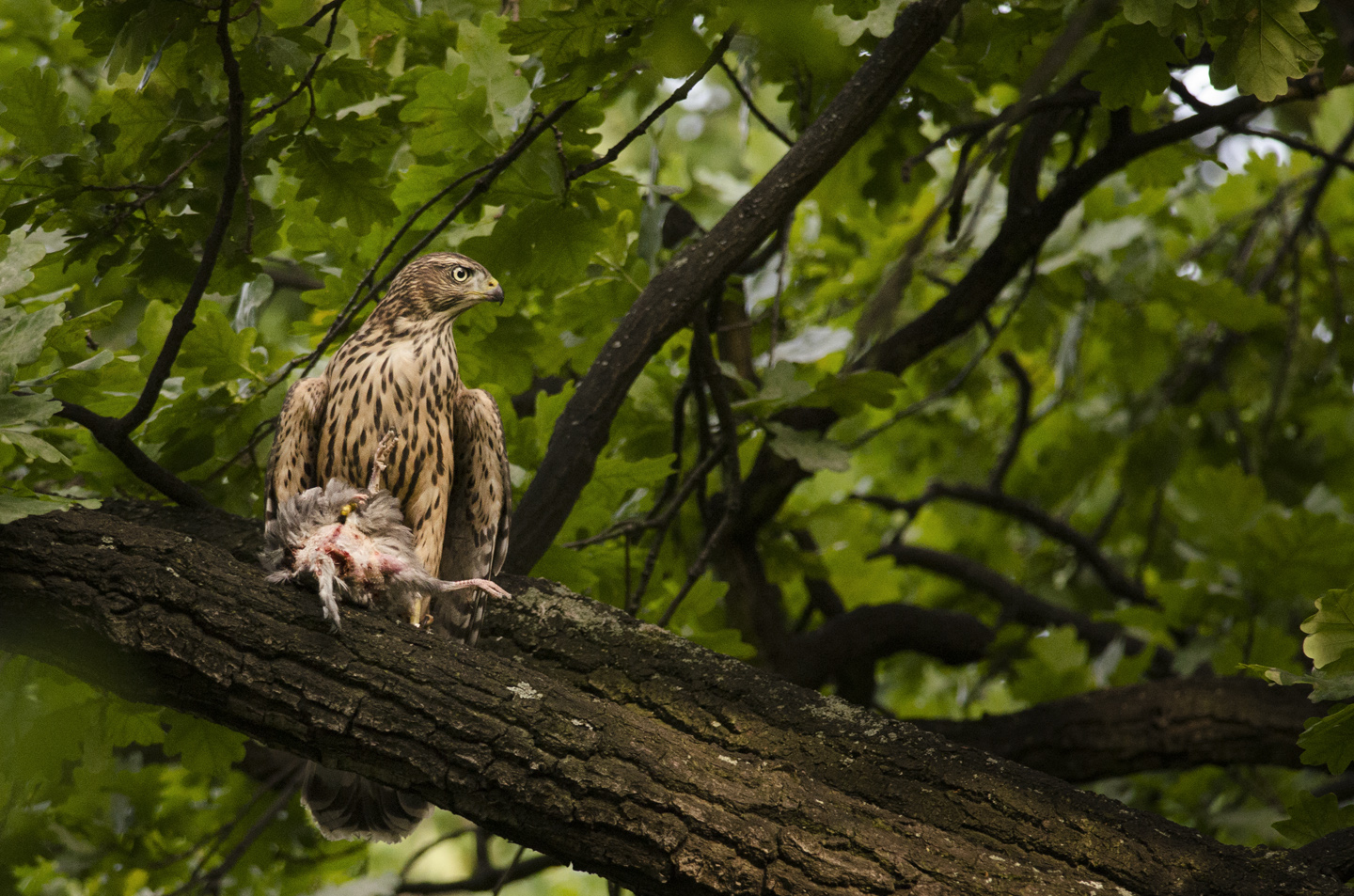
Fledging gos are incredibly precocious, sometimes catching prey just a few weeks out of the nest
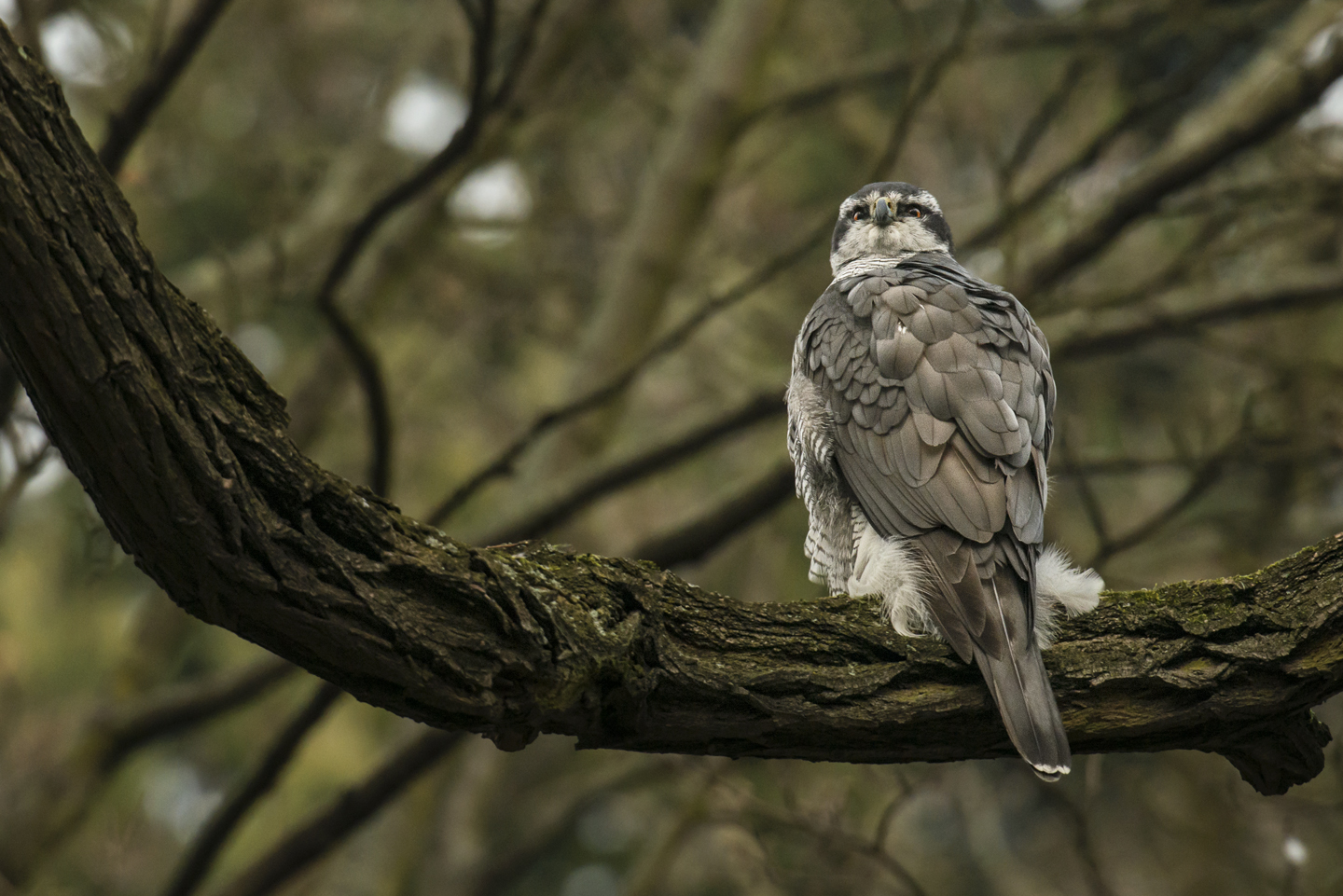
The adults continue to hold territory throughout the year as the next generation spread out to look for their own place in the world
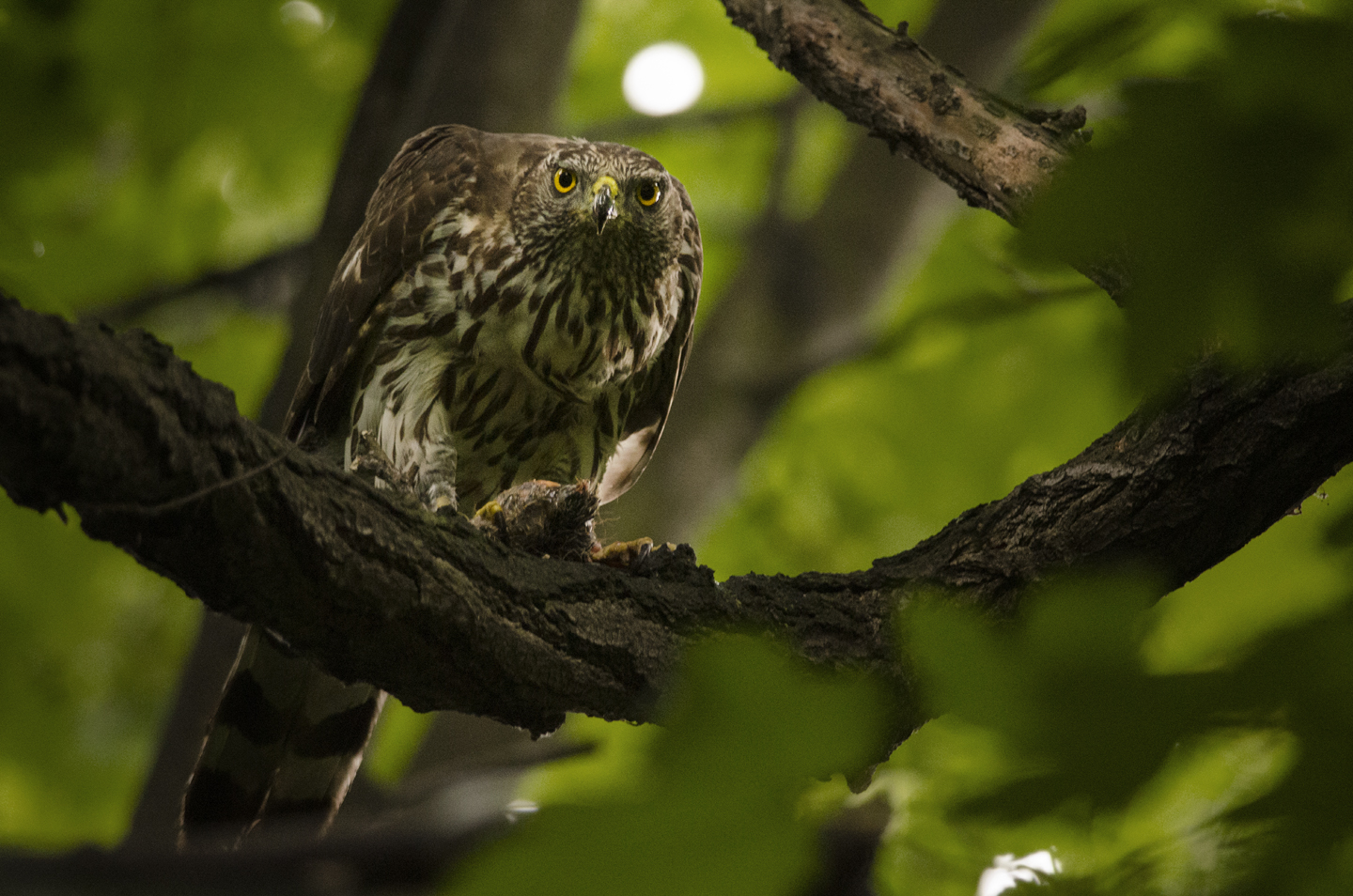
Some goshawks will breed as young as 1 year old, but 2 or 3 is more common. This yearling gos ousted an adult pair from this territory
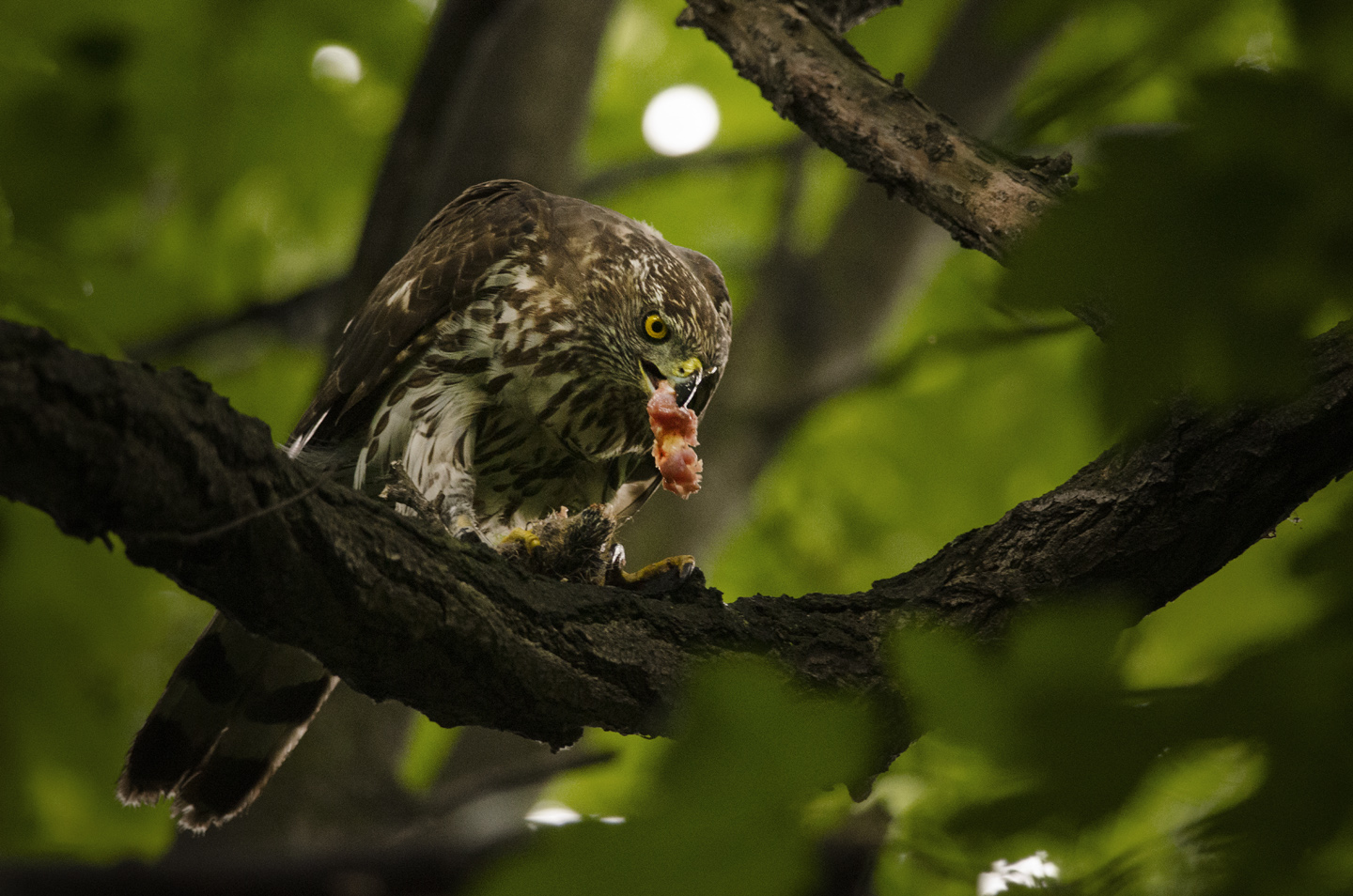
He had learnt that pigeon squabs are a year-round resource in the city
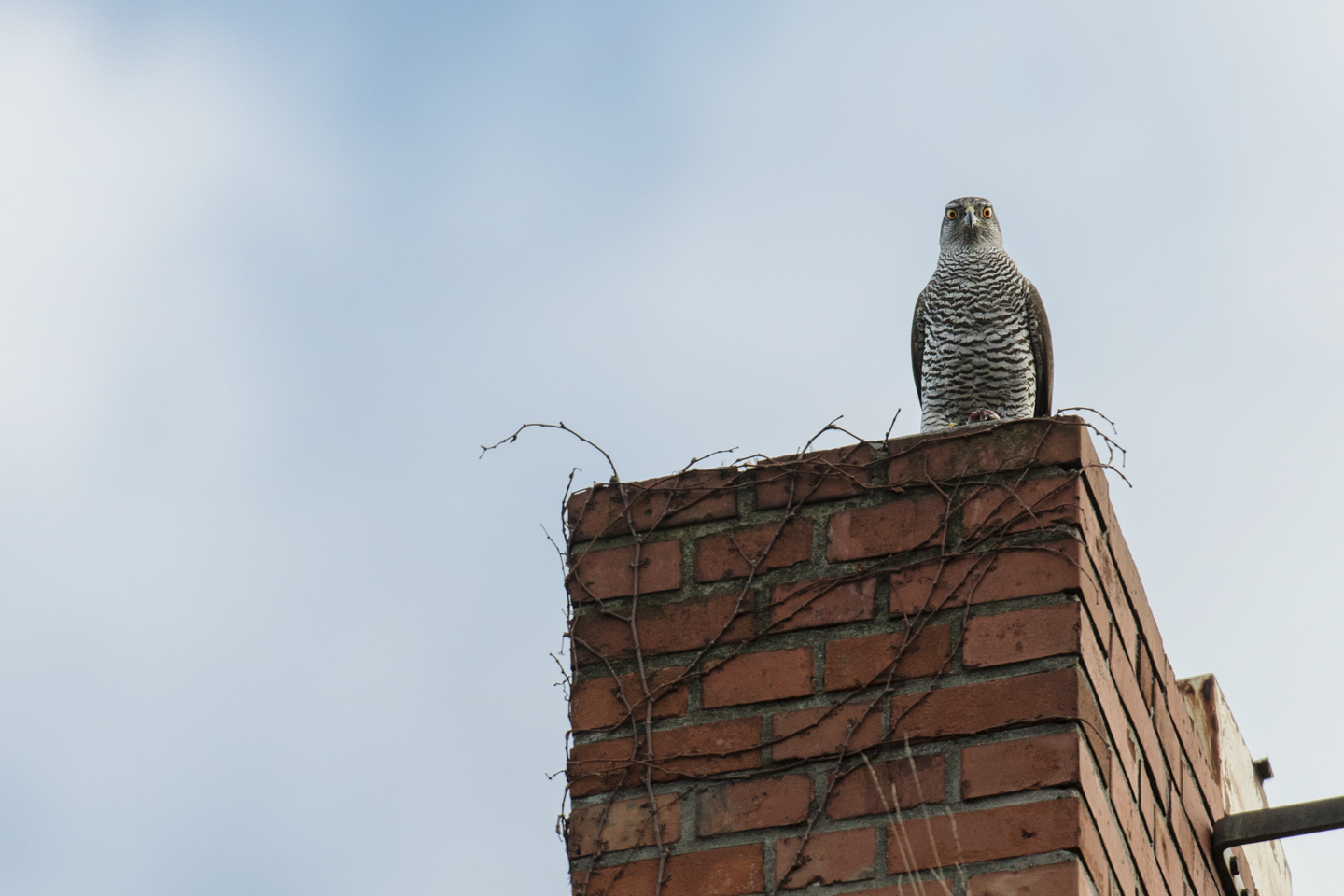
In the city, their is enough food to support the growing goshawk population. Capacity will be determined by the availability of breeding territories
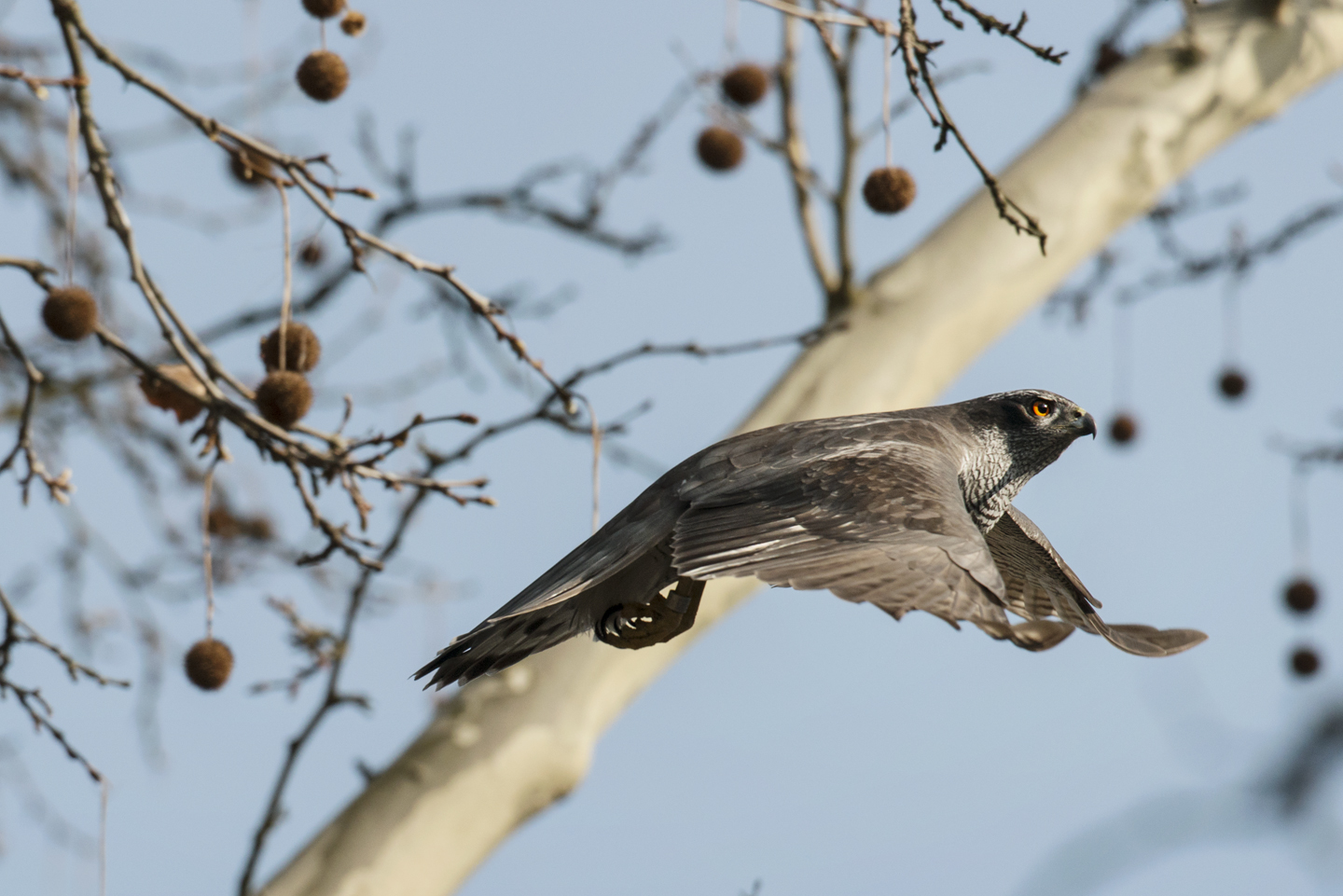
The Berlin goshawks are relatively free from persecution compared to their rural cousins. In the city, there are more eyes to monitor and look out for them
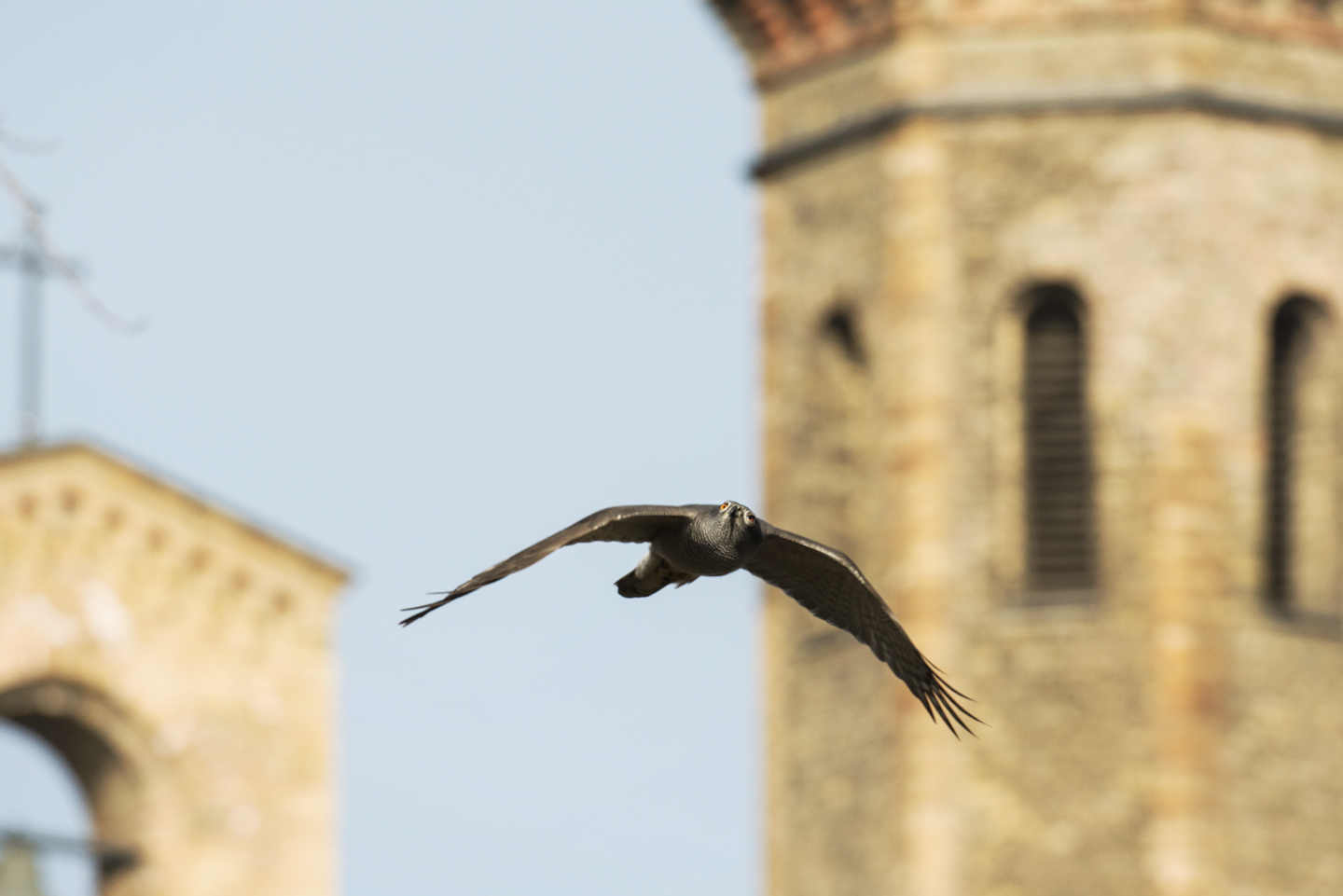
Apart from disease, windows are perhaps the biggest killer. Collisions are often fatal or will cause mortalities if injuries affect hunting ability
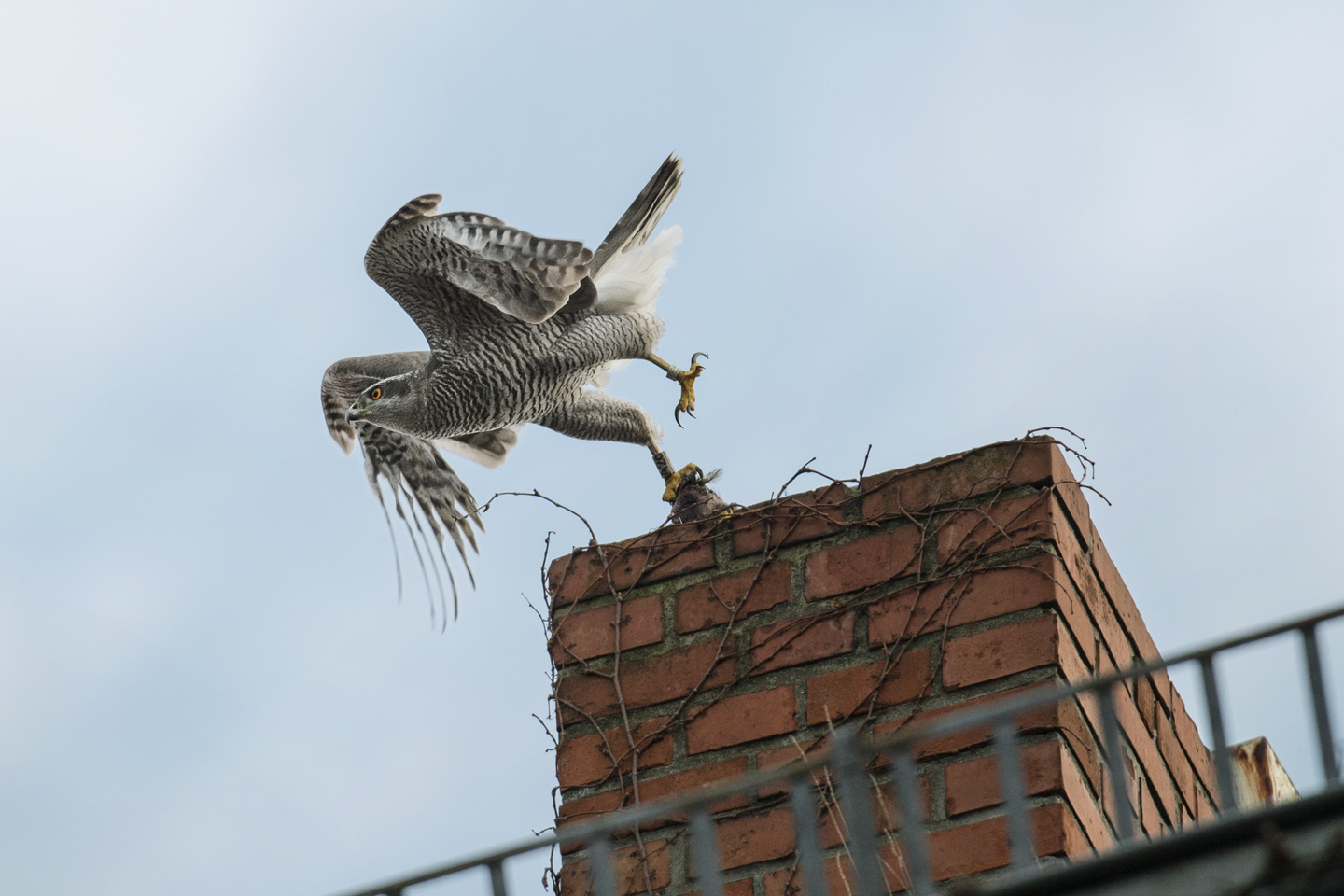
The future is looking bright for the urban goshawk, but it is impossible to know for certain without the kind of scientific study being undertaken by Dr. Kenntner and his colleagues

At least, if it is discovered that diseases spread more quickly in such dense populations, the colour-ringing scheme will help to determine this and other problems much more quickly
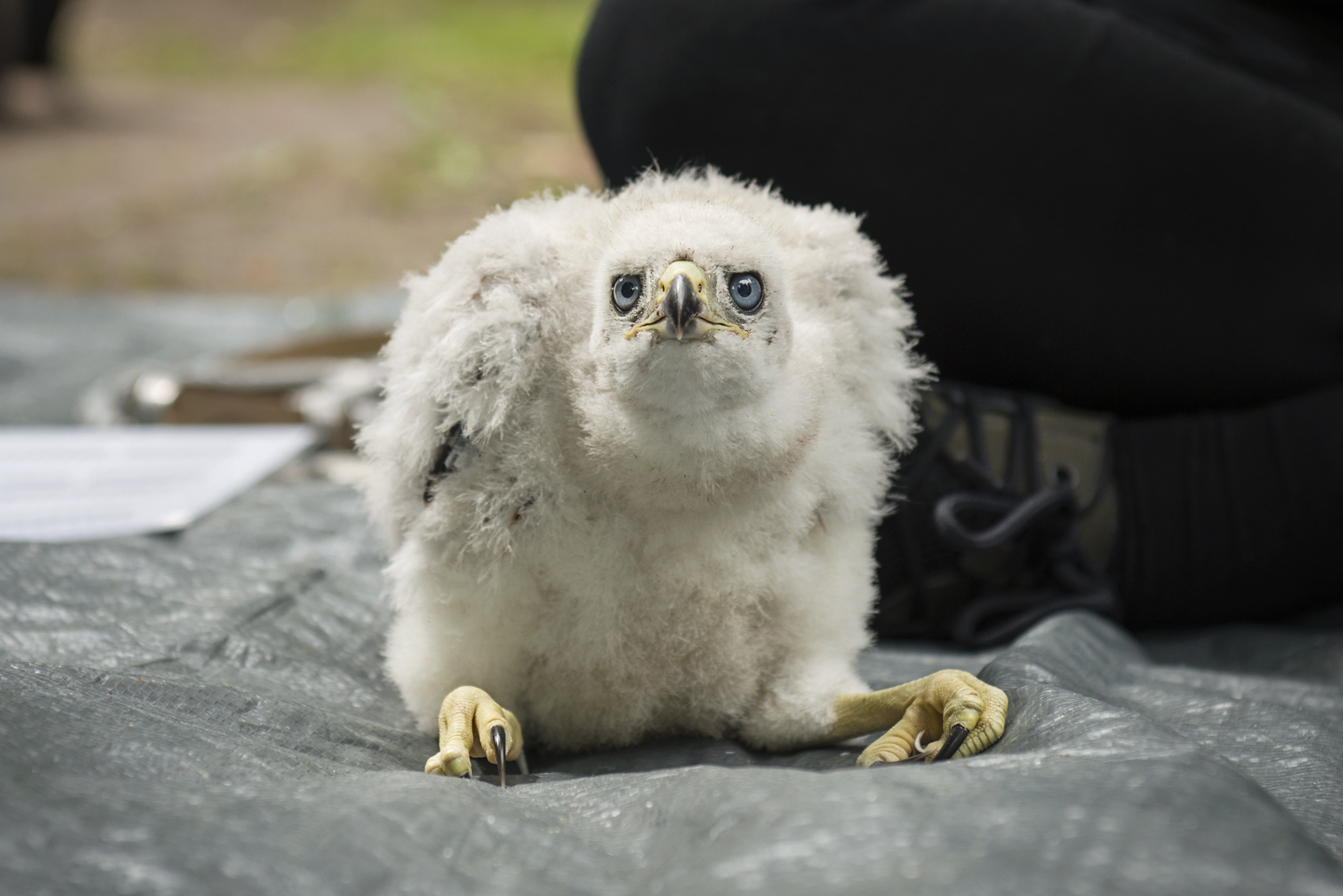
For now, urban goshawks are providing us with better opportunities than ever before to study this enigmatic raptor, and watch it develop from a ball of fluff..
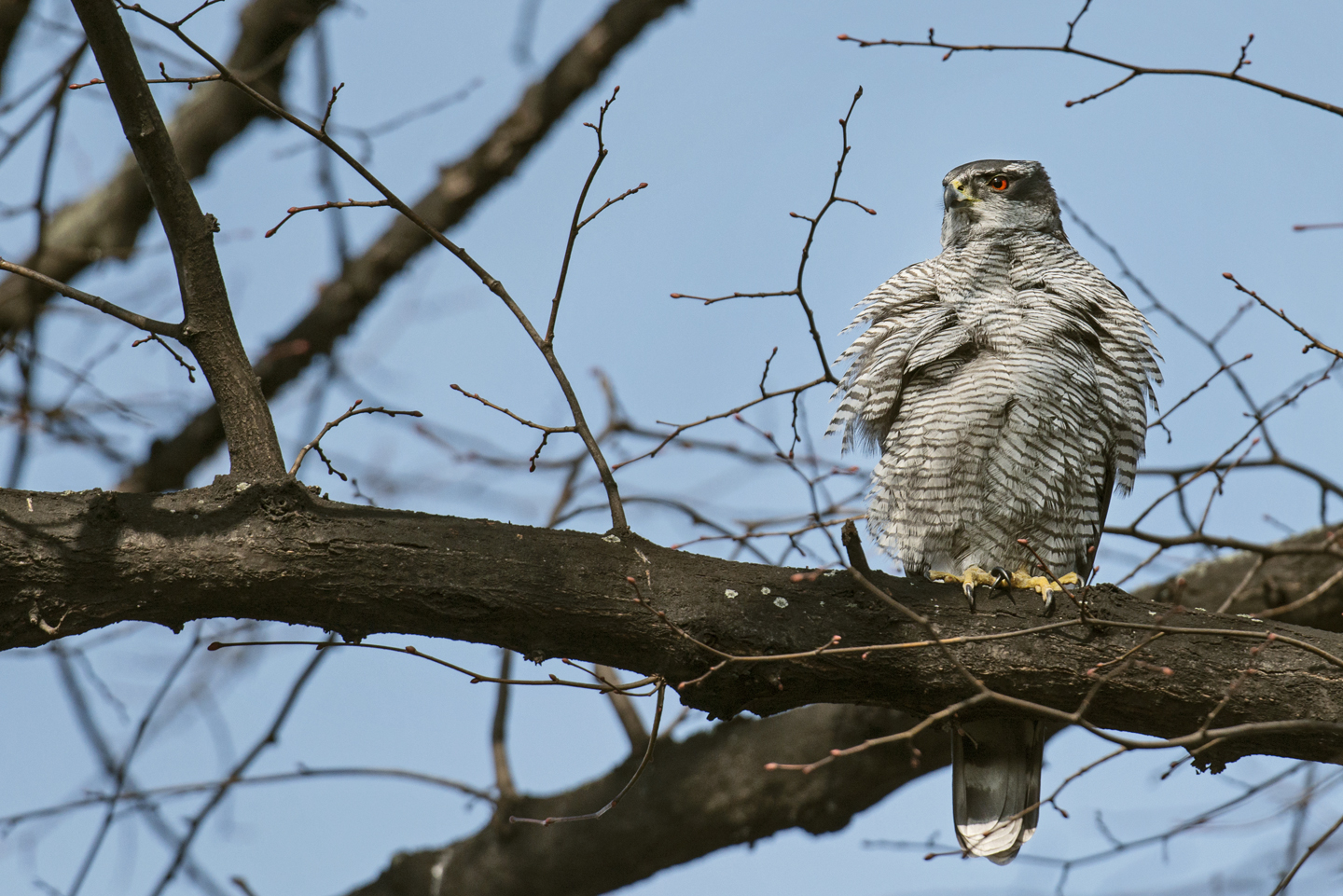
Into a beautiful and powerful raptor - a privilege and honour to have gracing our city's skies















































If you take a walk through Berlin's parks and cemeteries, you might be watched by a silent killer
Fabled in folklore and notoriously elusive, the northern goshawk has found a home in the city's tree-tops
From a few pioneering pairs in the early 80s, the goshawk is now a well established urban invader
There are over 100 breeding pairs in Berlin, with many more juveniles and unpaired birds making their homes in the city
Many goshawks nest in Berlin's suburban forests, but cemeteries, city parks and urban courtyards are increasingly common breeding territories
Feral pigeons and city rats are common prey, but kestrels, pet budgies and even long-eared owls are on the menu for this apex aerial predator
The goshawk has long powerful legs for chasing prey at ground level and for keeping seized prey at a distance - a peck from a crow could be blinding
These urban raptors may hunt in the city, but remain mostly arboreal - always nesting amongst the trees
Buildings do however provide perfect hunting perches, with unimpeded 360º views
During Spring courtship, the males call loudly, whilst "flagging" their under-tail coverts, and hope to impress the females with gifts of food
After mating, laying, incubation and hatching, the nestlings are monitored and ringed when old enough
Dr. Norbert Kenntner can age the nestlings by the size and spray-radius of droppings around the nesting tree
He wears a protective helmet and clothing when climbing - attacks by adults are uncommon, but can occasionally be relentless and fierce
The nest can be over 1.5 metres wide and over a metre deep
There are usually between 2 - 5 nestlings, with 3 or 4 being most common. The species of nesting tree is recorded, as is the leafy "greening" that lines the nest
The nestlings are carefully placed in soft canvas bags and lowered to the ground
At ground level, the chicks can be handled and processed more easily and quickly
Measurements such as wing-length are systematically recorded
The chicks are weighed, which combined with their measurements can conclusively determine the sex of each nestling
Colour-rings are attached to the nestlings, which can be read from a distance. Data from recoveries and subsequent sightings is invaluable to scientific study of the urban goshawk
The colour-ringing project is investigating age and origin, reproductive success, site fidelity, territory size, exchange of partners, proportion of non-breeders and helping to answer many other questions
The nestlings are ringed from between 2 and 5 weeks, starting in mid-May. Birds in Dr. Kenntner's area are ringed with the colour-ring on the right leg and conventional ring on the left
The conventional Radolfzell goshawk rings come in 2 different sizes. Like many raptors, goshawks are sexually dimorphic - the females being much larger than the males
The goshawk colour-ringing project is now (2014) in it's third year, but conventional ringing goes back much further. This old male, known locally as "Methusalem", was ringed as a nestling over 15 years ago
Unlike Methusalem, the nestlings begin life with pale blue eyes. They turn grey-green by fledging, deep yellow in their first year, rich orange as they mature and finally ruby red in old age
During ringing, the climber waits in the tree-top, while the adult goshawks often keep a close watch from a nearby perch
They regularly make much closer fly-bys to get better views of the proceedings
The climber removes the unhatched addled eggs from the nest, which are labelled and taken for scientific analysis
After ringing, swabs and feather samples are taken from the nestlings
Crop samples are taken to test for diseases like trichomonosis, which has become quite common in urban goshawks and could be transmitted through their feral pigeon prey
If the nestlings are old enough, blood samples are collected for DNA analysis and further testing
The blood slides, samples and data are used by Dr. Kenntner, NABU Berlin and the Leibniz Institute to gain a better understanding of the health of Berlin's goshawk population
The ringing process can be traumatic, but the scientists and ringers work quickly and the whole process is over in around 15 - 20 minutes
Their pride is only temporarily damaged and after ringing, the climber quickly raises them back up the tree, places them in the nest and abseils down
Back up in the canopy, the young continue to develop. Slowly the "branchers" explore the tree-top around the nest, in preparation for fledging
Once fledged, they remain dependent on the adults for food. This young juvenile is clutching the remains of a city rat
Fledging gos are incredibly precocious, sometimes catching prey just a few weeks out of the nest
The adults continue to hold territory throughout the year as the next generation spread out to look for their own place in the world
Some goshawks will breed as young as 1 year old, but 2 or 3 is more common. This yearling gos ousted an adult pair from this territory
He had learnt that pigeon squabs are a year-round resource in the city
In the city, their is enough food to support the growing goshawk population. Capacity will be determined by the availability of breeding territories
The Berlin goshawks are relatively free from persecution compared to their rural cousins. In the city, there are more eyes to monitor and look out for them
Apart from disease, windows are perhaps the biggest killer. Collisions are often fatal or will cause mortalities if injuries affect hunting ability
The future is looking bright for the urban goshawk, but it is impossible to know for certain without the kind of scientific study being undertaken by Dr. Kenntner and his colleagues
At least, if it is discovered that diseases spread more quickly in such dense populations, the colour-ringing scheme will help to determine this and other problems much more quickly
For now, urban goshawks are providing us with better opportunities than ever before to study this enigmatic raptor, and watch it develop from a ball of fluff..
Into a beautiful and powerful raptor - a privilege and honour to have gracing our city's skies
